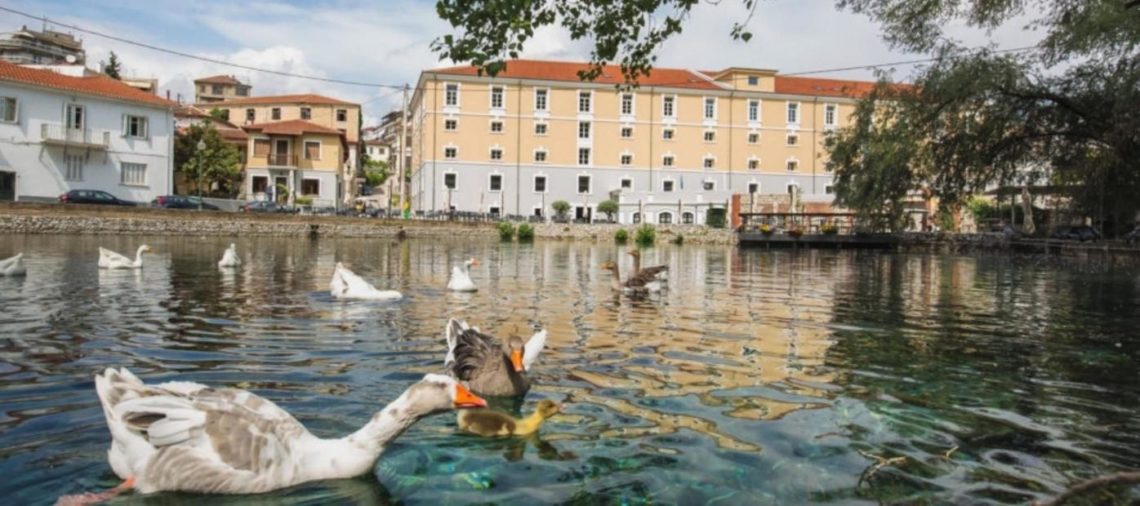Generally speaking, we go to Greece for islands, sea, sun, and tzatziki. When you hear of Greece, you instantly think of Santorini, Mykonos, Crete, Thassos and Halkidiki, Corfu, and Lefkada. But Greece isn’t just the land of islands. And those who also love the mountains should know that you can spend a superb holiday in Northern Greece, discovering fantastic scenery, delicious food and wine, and friendly people.
For two weeks, I took a road trip through Northern Greece, visiting six Greek regions: Eastern, Central, and Western Macedonia, Pieria, and Epirus. A kind of marathon run at the intensity of a 100m race, during which I X-rayed geographically, historically, touristically, and gastronomically a part of Greece that I hope will arouse your curiosity. And to set you off on a journey of discovery because it has so much to offer that at some point, it might overwhelm you.
A beautiful Greece, predominantly mountainous, predominantly rural, which I am happy to present in six episodes, experienced at maximum intensity, in a November bathed in the gentle rays sent by the god Apollo. This is the first one, and it covers the beautiful Drama region, part of Eastern Macedonia.
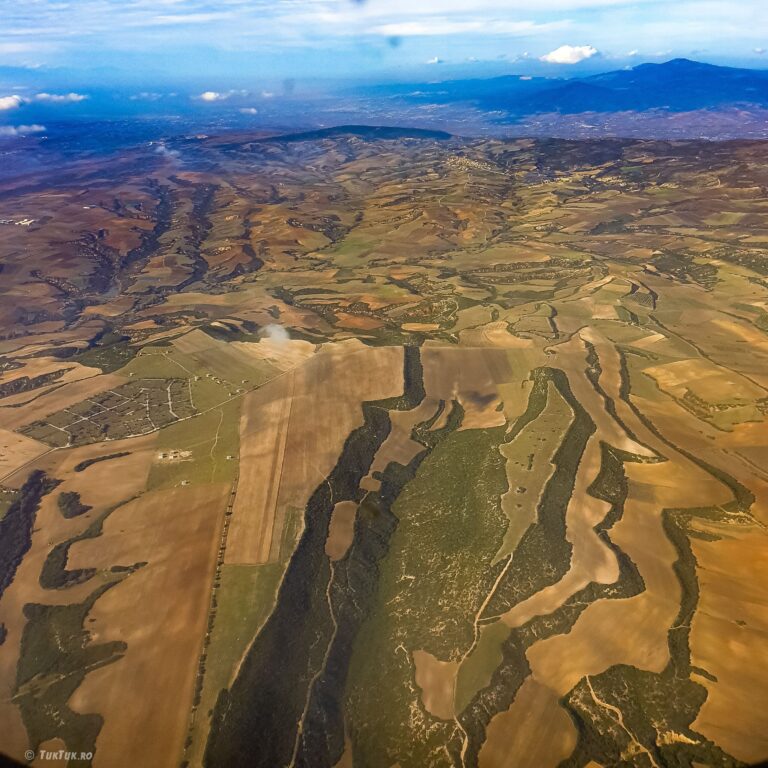
Hydrama from Drama
A short flight to Thessaloniki (from Bucharest), a limousine van, and a journey of almost two hours. I arrived in Drama, a town in north-eastern Greece, more precisely in Eastern Macedonia, a city of 45,000 inhabitants, easy to visit on the way to Thassos by car, if you can get over your impatience to get to the sea. In other words… if you’re still heading to Kavala, from where you take the ferry to the Emerald Isle of Thassos, look a little higher on the map: just 37km away, at the foot of Mount Falakro (‘the bald mountain’), lies Drama.
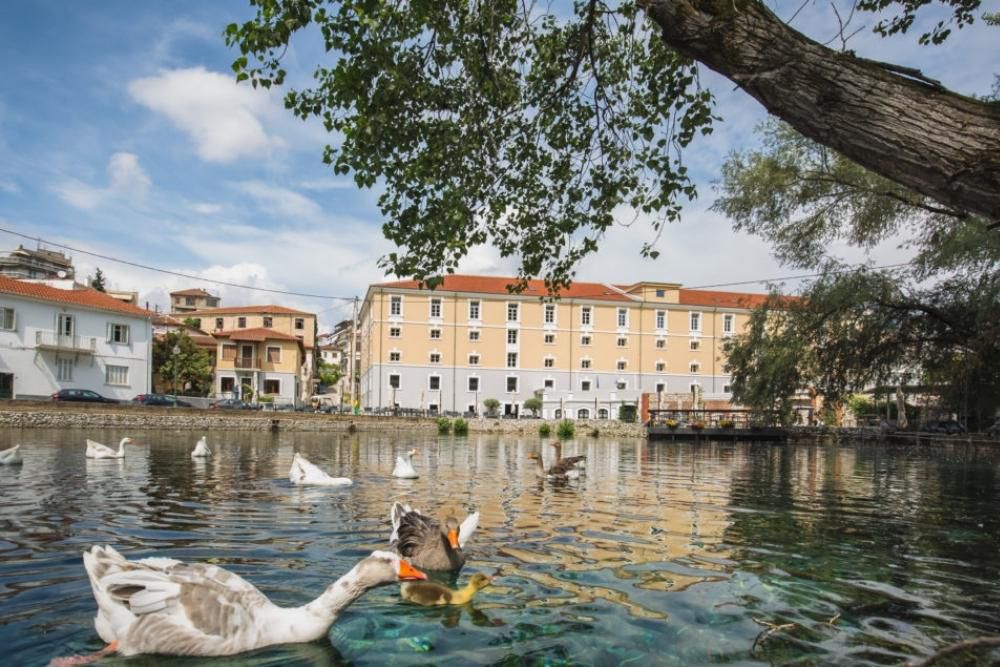
The first stop on the long journey through northern Greece also includes the best place to set up headquarters. In short, when you get to Drama, the suggestion is to check into the Hydrama Grand Hotel. Not just because it’s five stars, but mainly because it’s located next to the park I’ll tell you about in a moment, and because it’s housed in an imposing old tobacco factory/warehouse opened in 1924 by industrialist Herman Spierer. At the time, the locals called the building the Spierer Skyscraper (although now the height is not the building’s defining quality).
Incidentally, Drama (and the surrounding region) was known in the past for its production of quality tobacco. This industry did very well until the locals discovered an “El Dorado” in Germany, choosing to move there to work and bring more money to their families. After the Greeks returned, better off in pocket and in mind, tobacco was no longer the source of prosperity it once was in a town that had made a good living from tobacco smoke.
For a while, in the mid-Byzantine period (9th-13th centuries), Drama was a fortified town at the crossroads of trade and military roads. By the end of the 19th century, the tobacco trade, the railway built in 1895, and the improved road to the port of Kavala led to the town’s flourishing. The early 1900s brought Drama under Bulgarian occupation, but on July 1, 1913, it was liberated for good by the Greek army.
The beautiful natural springs park
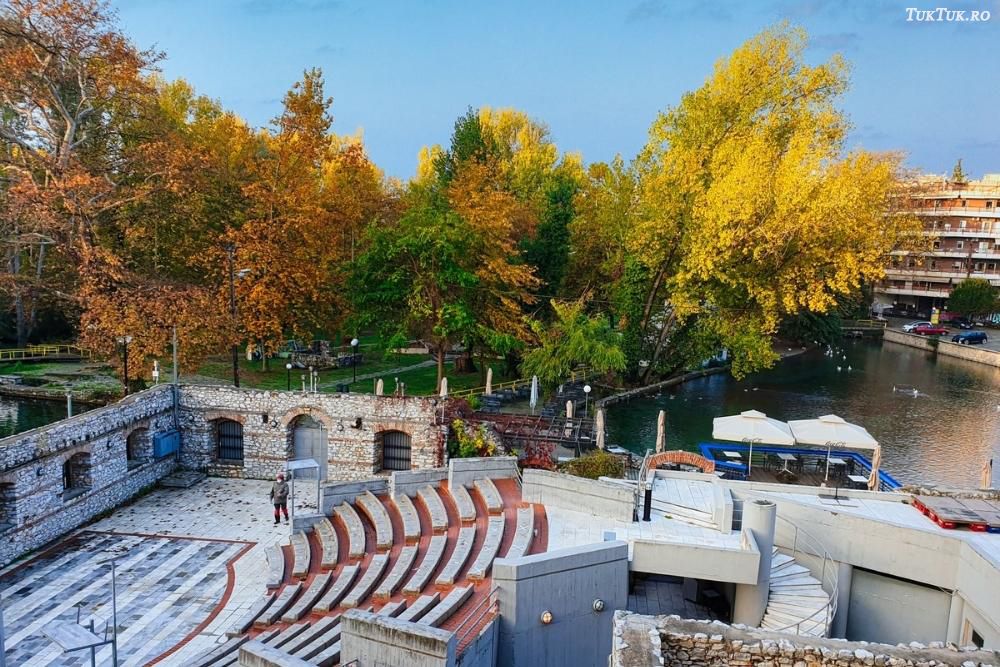
I arrived in Drama in the evening, but the first glimpse we had the next morning after opening the hotel room window – the one with the small lakeside amphitheater in the park’s autumnal colors – was very magnetic.
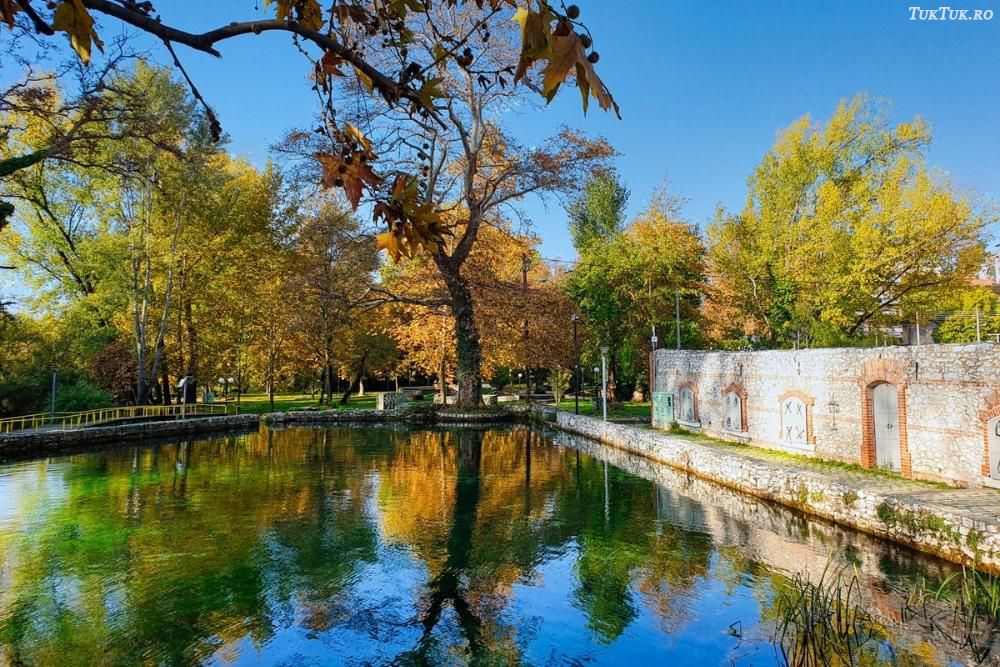
St. Varvara Park is one of the most beautiful urban parks I’ve encountered in my wanderings. A feast of sights and sounds in the middle of a quiet town, an idyllic location, dotted with small lakes, natural springs (these characterize the town, by the way), waterfalls, fountains, bridges, trees, paths, traditional mills, discreet taverns and performance arenas, all encompassed in a superb setting, as if arranged by the hand of a champion decorator. It’s also a fantastic place for birds of all kinds, which flock to the park’s waters and alleyways like rightful owners, harmoniously completing the landscape.
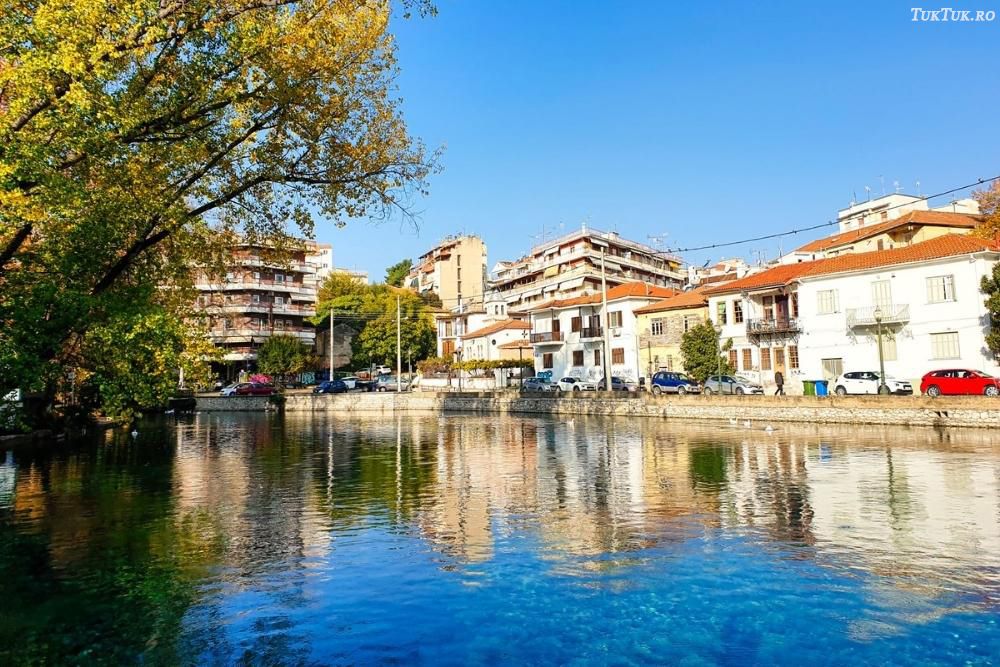
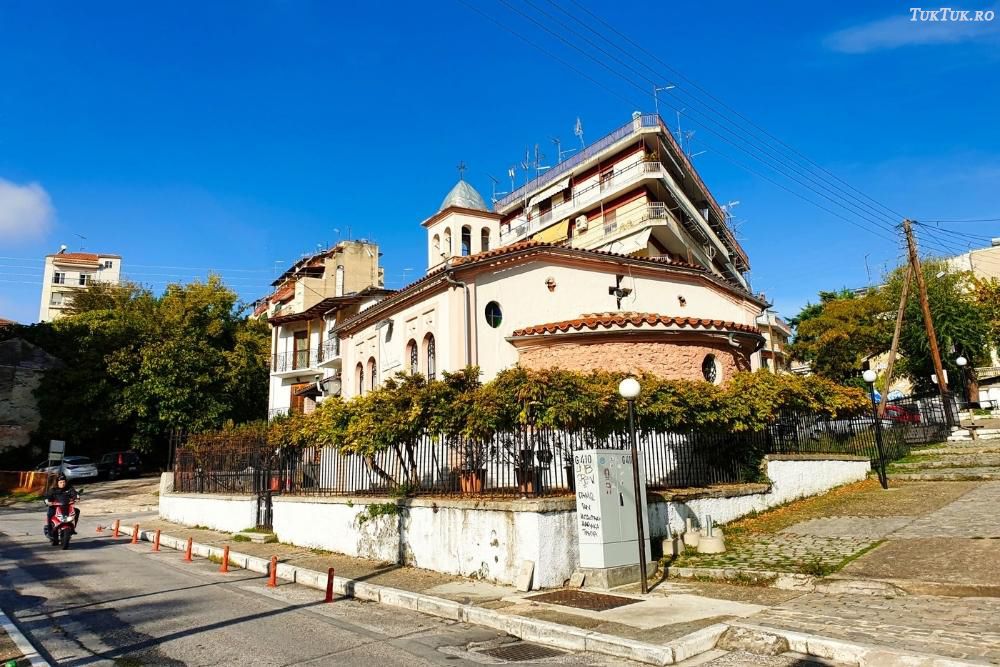
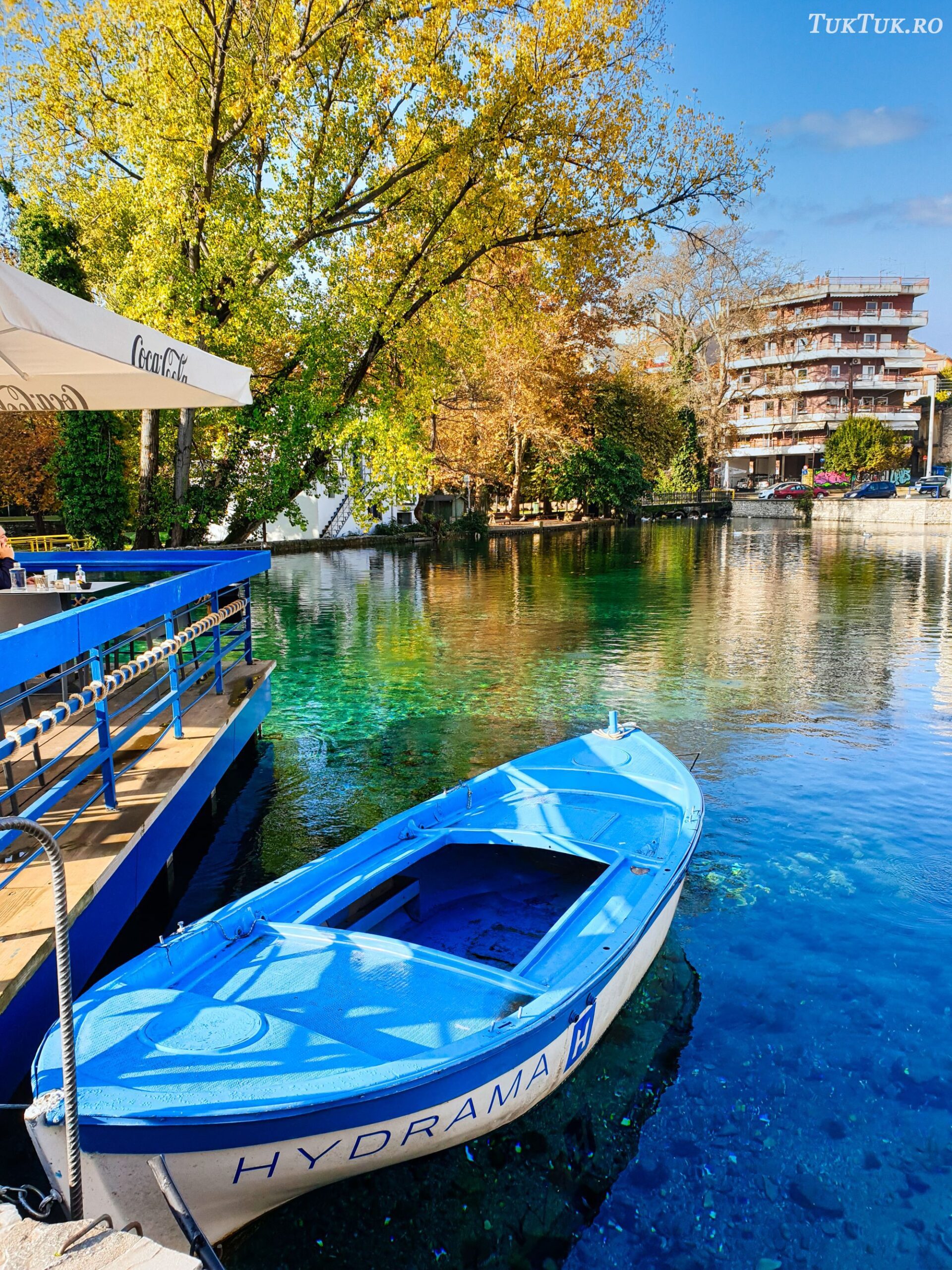
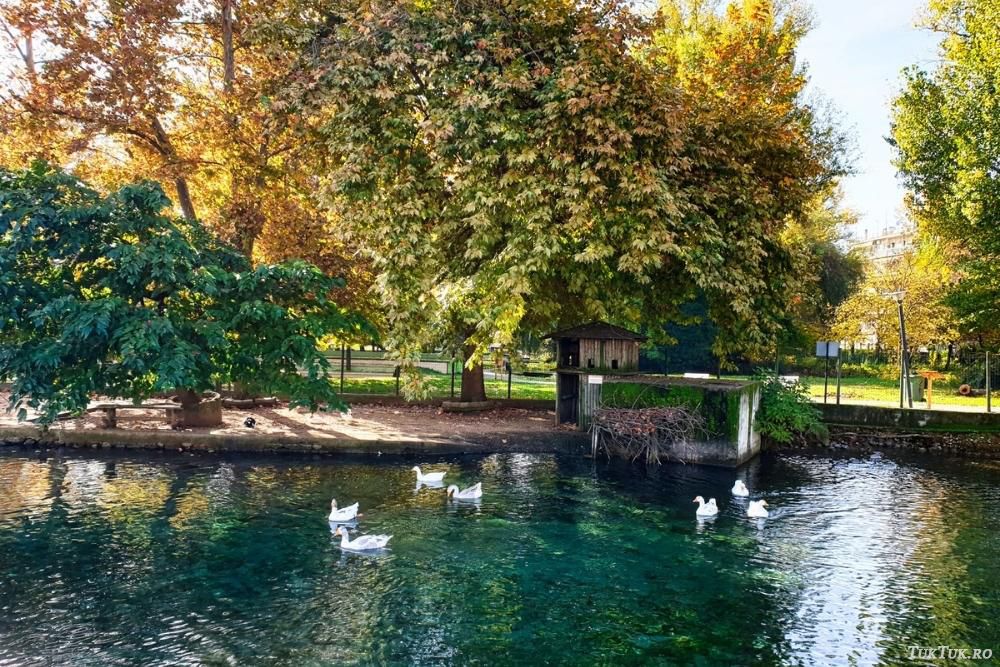
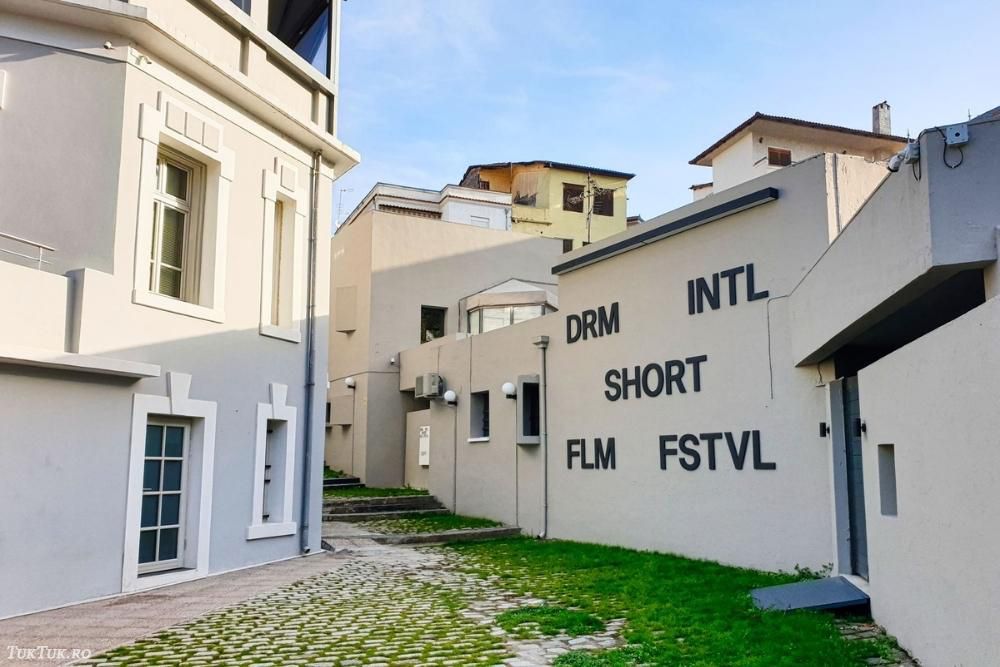
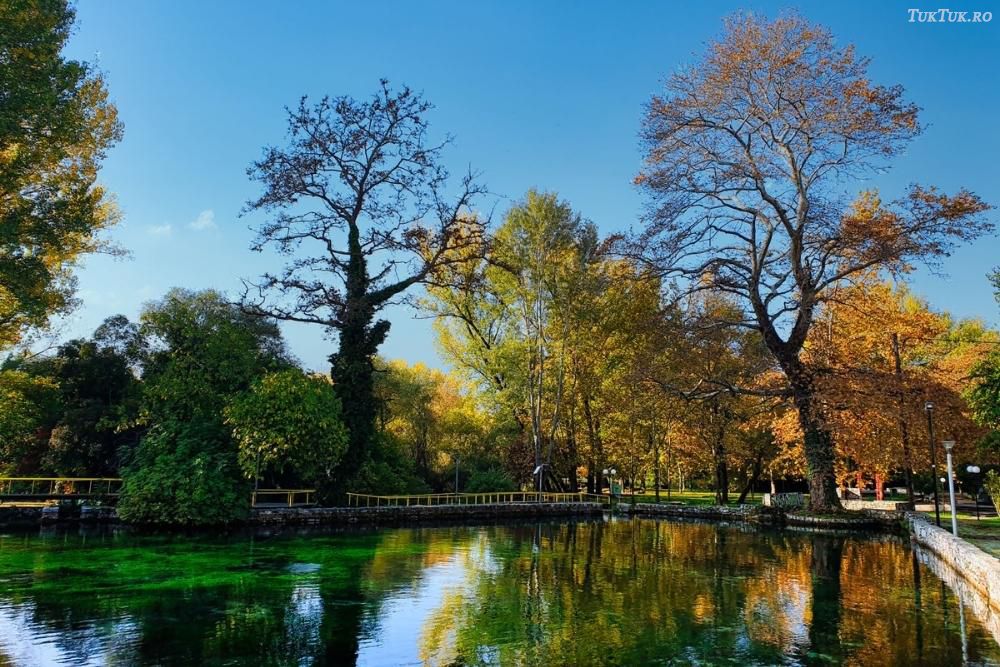
Looking back, I would return to Drama if only to linger another hour in the lanes of this beautiful park, and the very thought of teleporting there gives me a moment of absolute bliss. Because, in the words of Immanuel Kant, “happiness is not the ideal of reason, but of imagination”.
St. Varvara, the clear and beautiful flowing
The town of Drama is only the “capital” of the region of the same name, part of Eastern Macedonia. An area known mainly for its good food and wine, not necessarily very touristy (Bulgarians and Turks visit in particular), whose economic “virtues” are represented by the production of white marble (most of which is exported to China). The main tourist attractions are the Rhodope National Park (with its natural splendors), a small ski area, the Drama International Short Film Festival (held annually in September), and the town’s Christmas Fair, which attracts many Greeks during the winter holidays.
Local guide Michail Papadopoulos made it easy for me to discover some of the region’s gems on an hours-long nature walk. About 18% of the Rhodope Mountains are in Greece, in the northeast (the rest is in Bulgaria). This is, as I said, where the Rhodope National Park lies, an ideal area for nature lovers and hikers (as well as many other things, from skiing to bird photography).
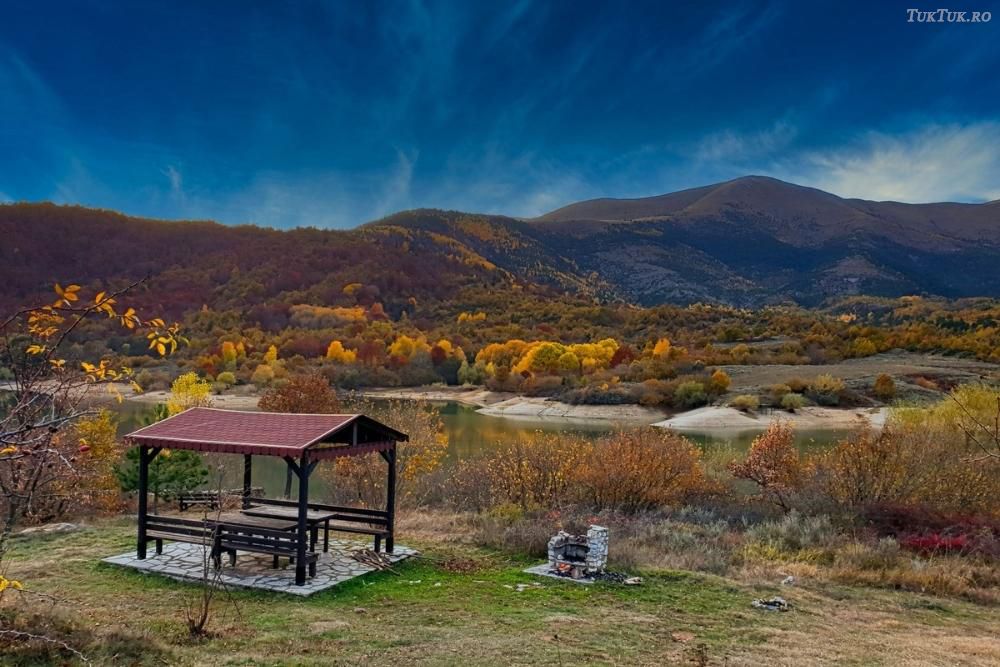
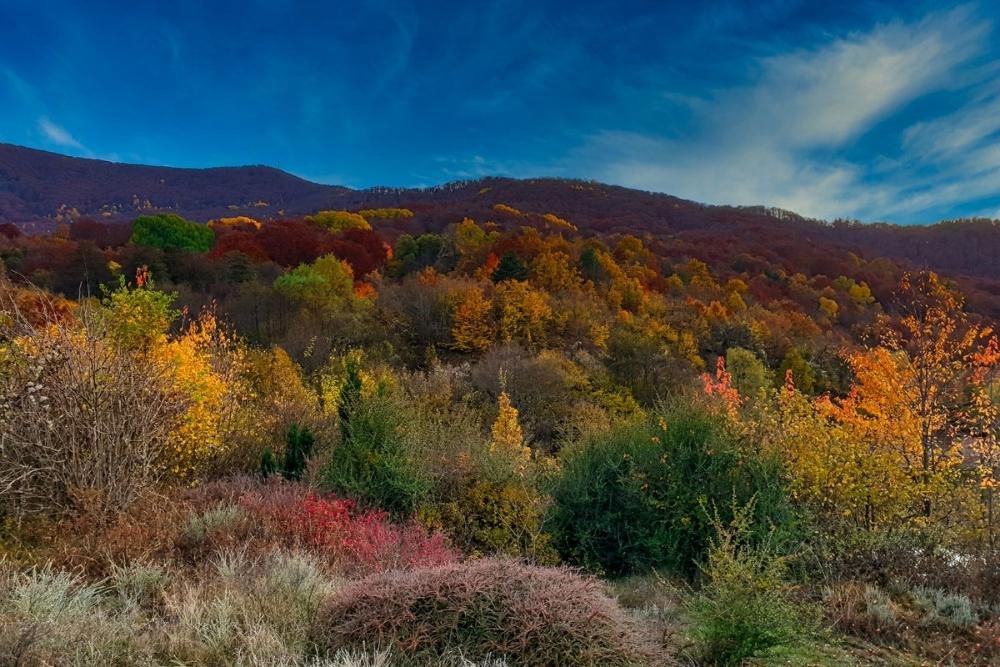
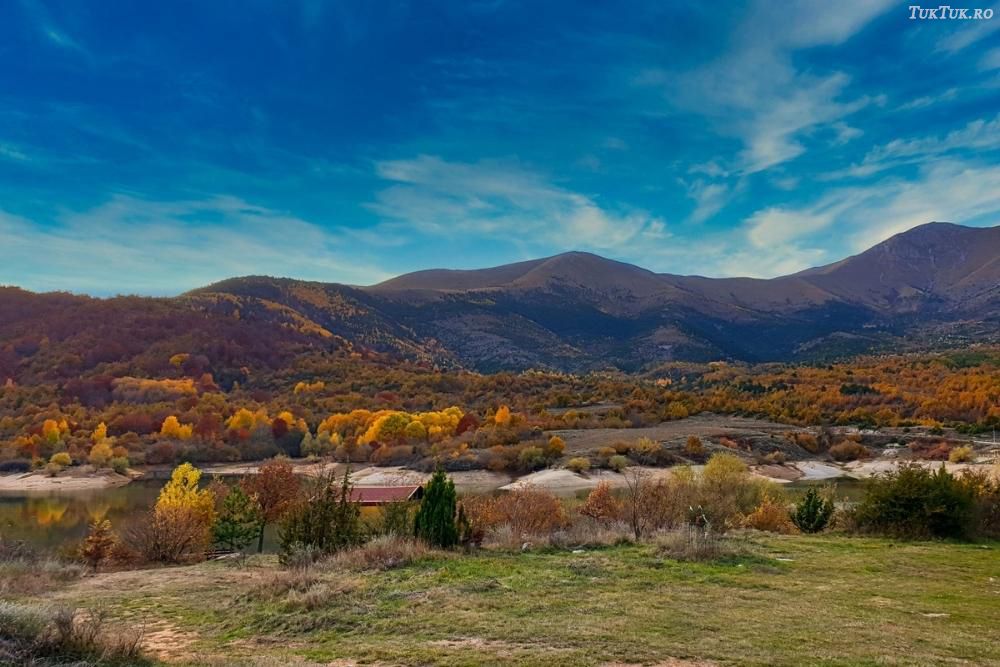
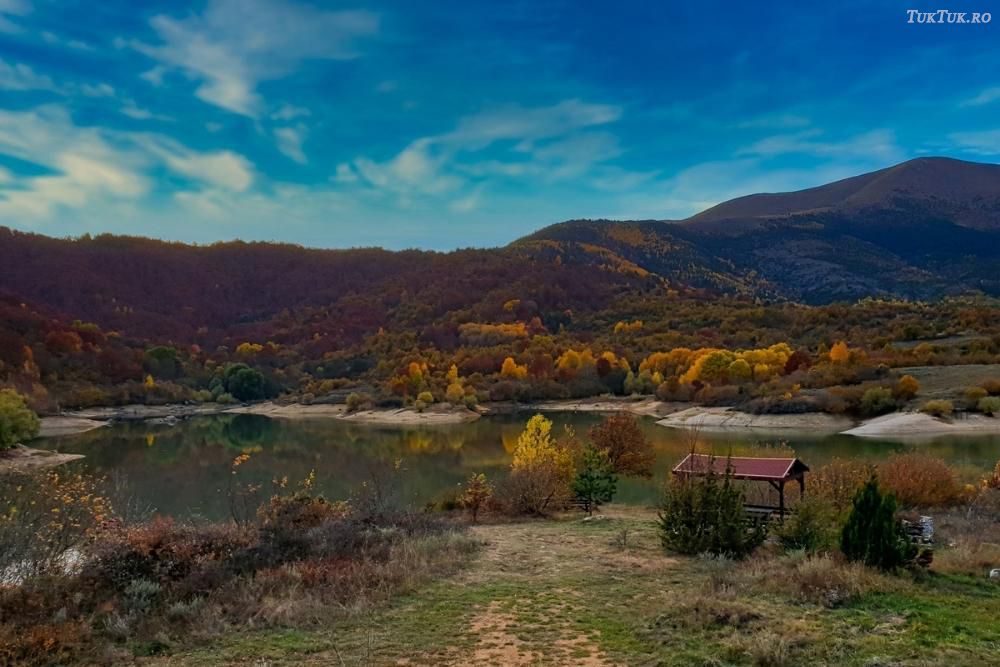
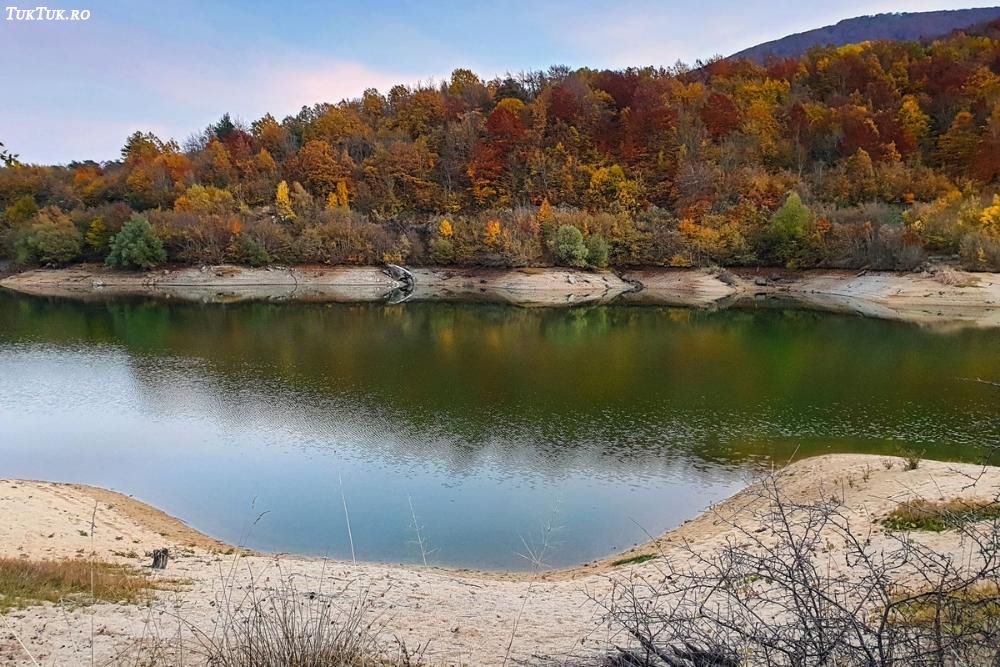
In this little Greek paradise, I came across a little-known gem: the St. Varvara waterfall, with a 25-meter fall, on the road to the village of Dipotoma (about 30 km from Drama). A place in the forest, reached by a short hike of only 10 minutes, its paradisiacal image fills you with energy and a good mood. In addition, I found out that, if you have patience and time, in Rhodope National Park, you can admire the Rhodope iris, an endemic species that join the other 2,000 plant species that makeup 30% of Greece’s flora. Not to mention the 90 bears and many wolves – which you wouldn’t want to meet.
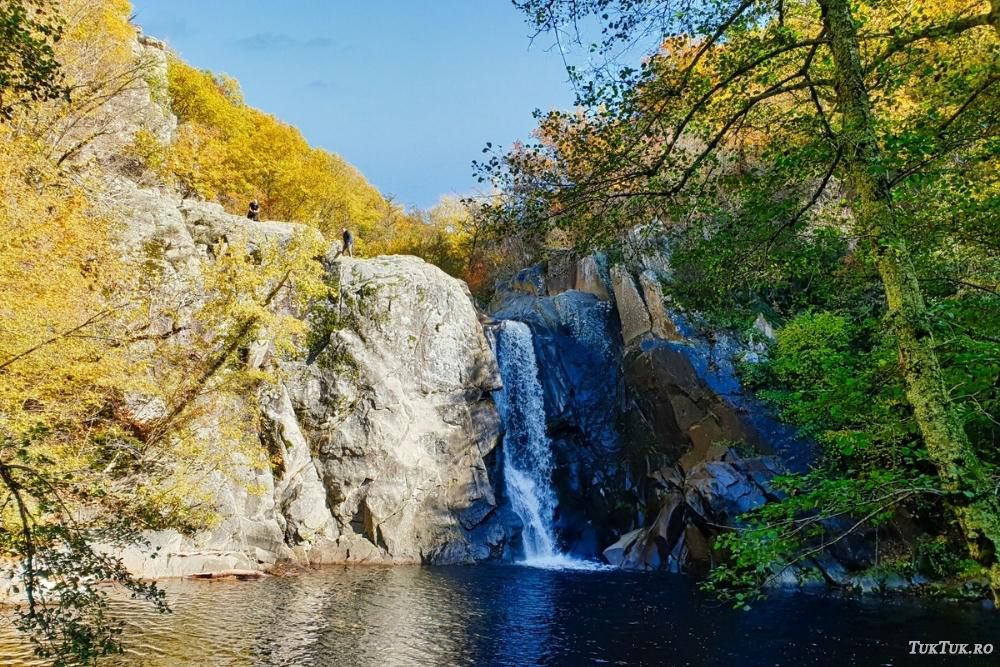
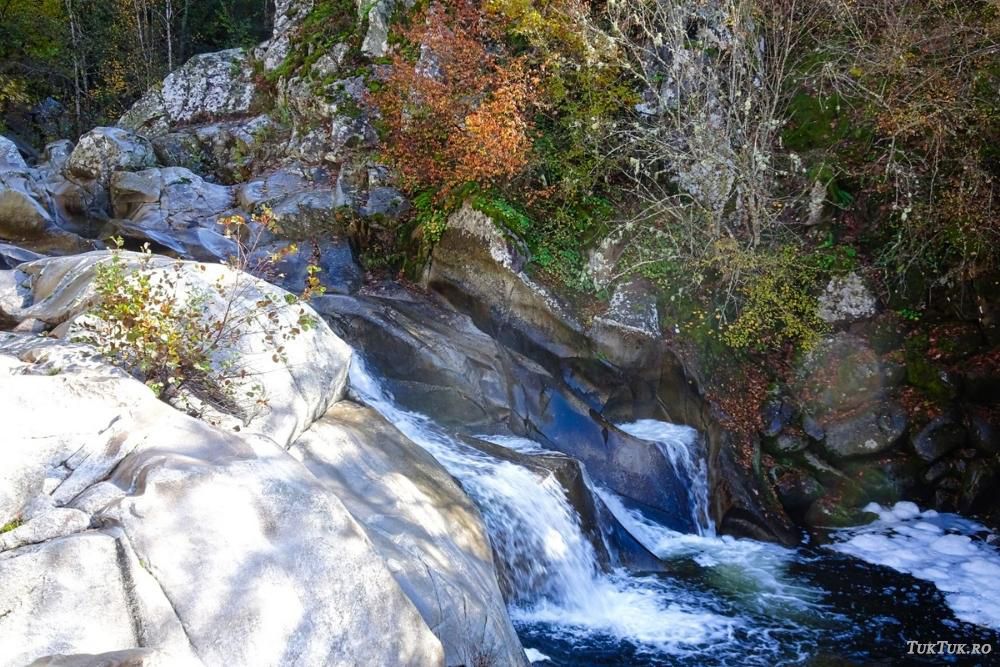
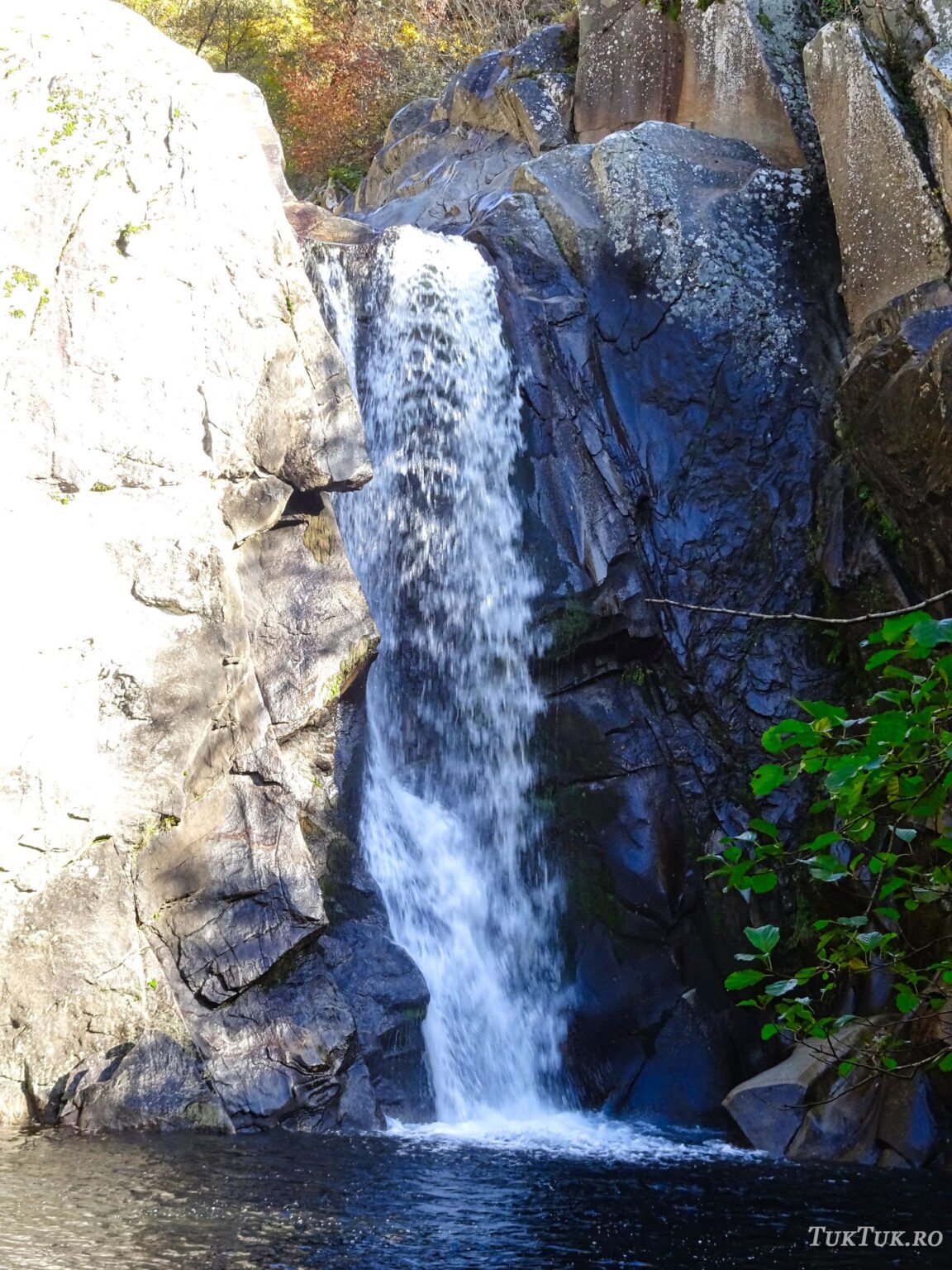
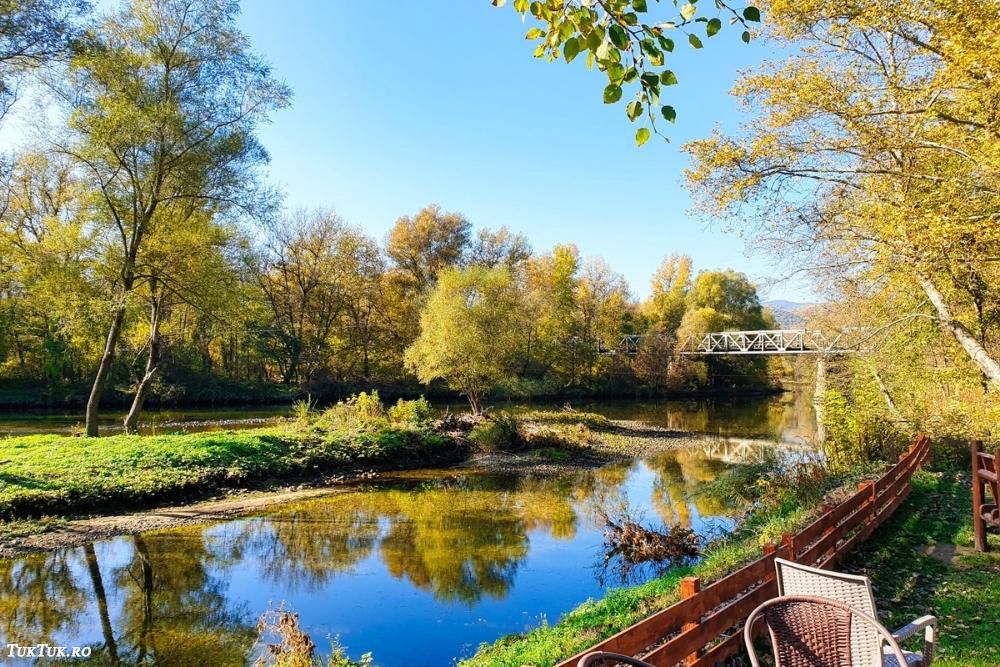
On my return to Drama, I ate in a village where, perhaps, at first glance, you wouldn’t stop if you were drawn to something fancier: Paranesti. But if you’re going to follow my route, stop at the Mpozidi taverna. The food is so good, you won’t regret a second of it – from the spicy tirokafteri cheese to the lamb chops and godlike sausages brought to you by the tavern’s god, a miller who asks with a grim look, “Do you like it?”. Then why the hell don’t you eat it all?”. Have no more space left, kir Dionyssos, live your wine in crystal glasses and be your panacota bouncy, according to your advertisement: viagra of Greece!
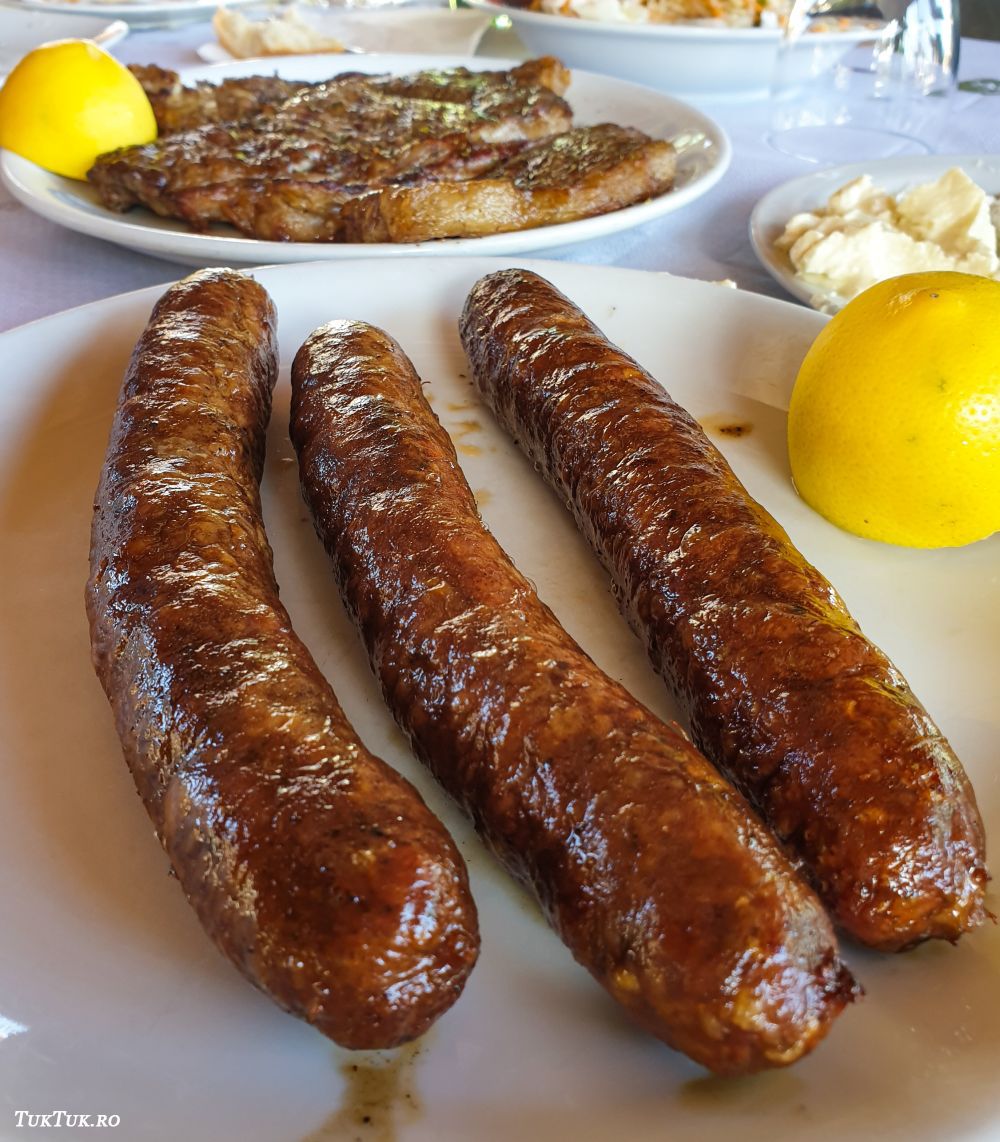
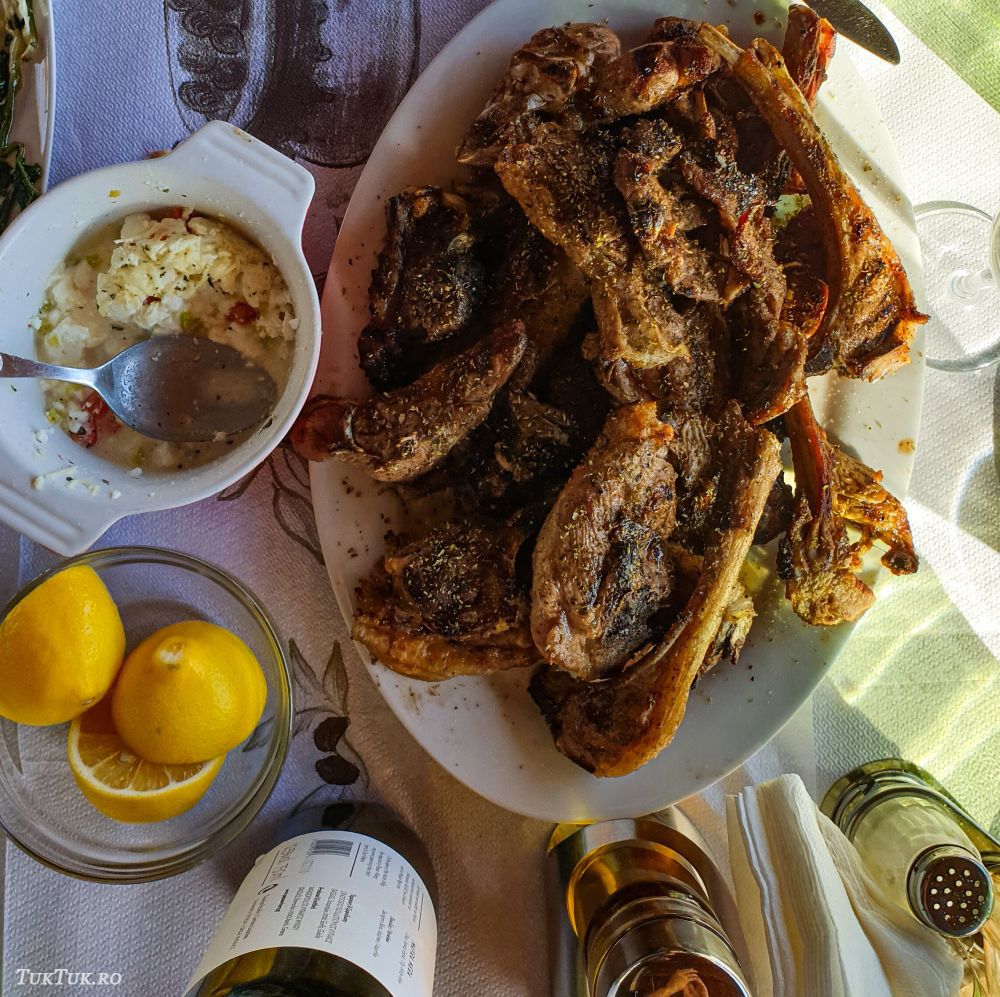
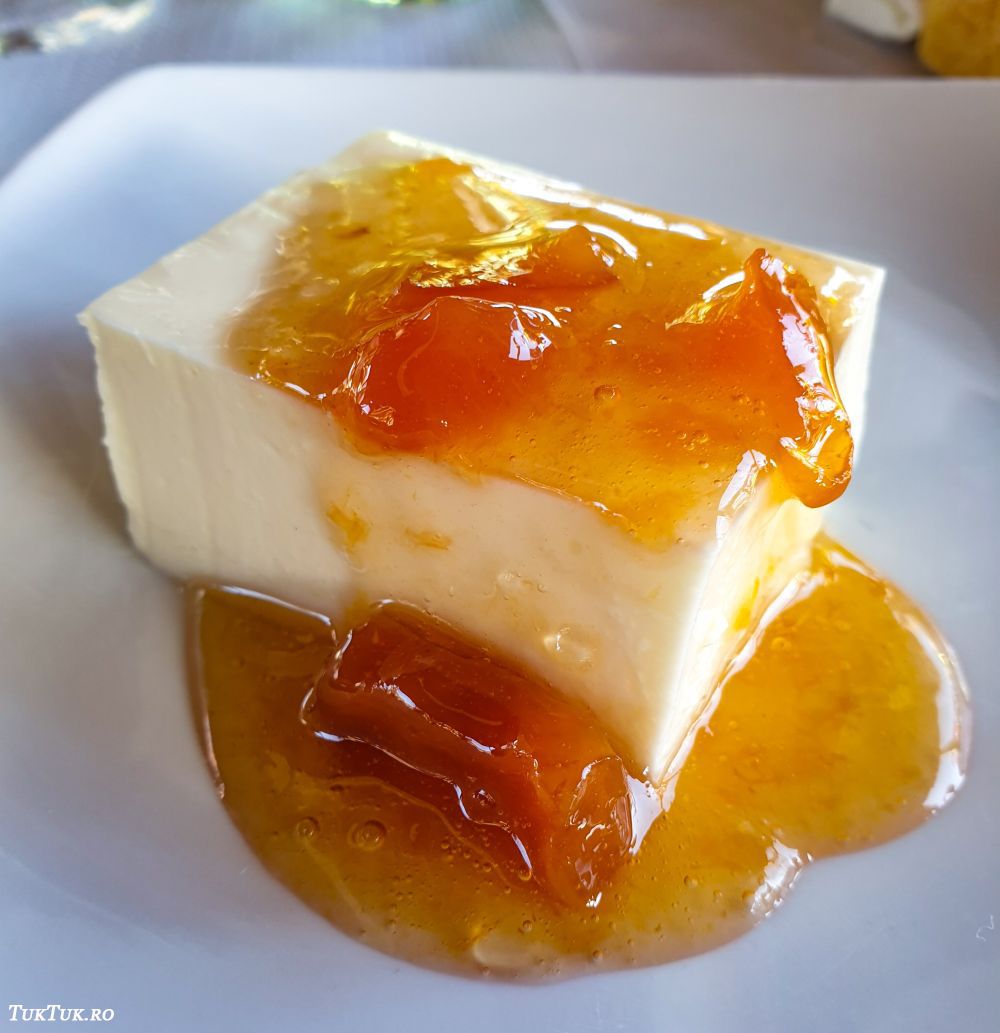
In fact, Paranesti, despite being home to only 400 souls, is a village with some notoriety. It is located in a superb area where those with a sporting spirit can go rafting, trekking, jeep safari, paragliding, climbing, horse riding, kayaking, and other adrenaline-generating “ing”.
Drama’s outstanding wines
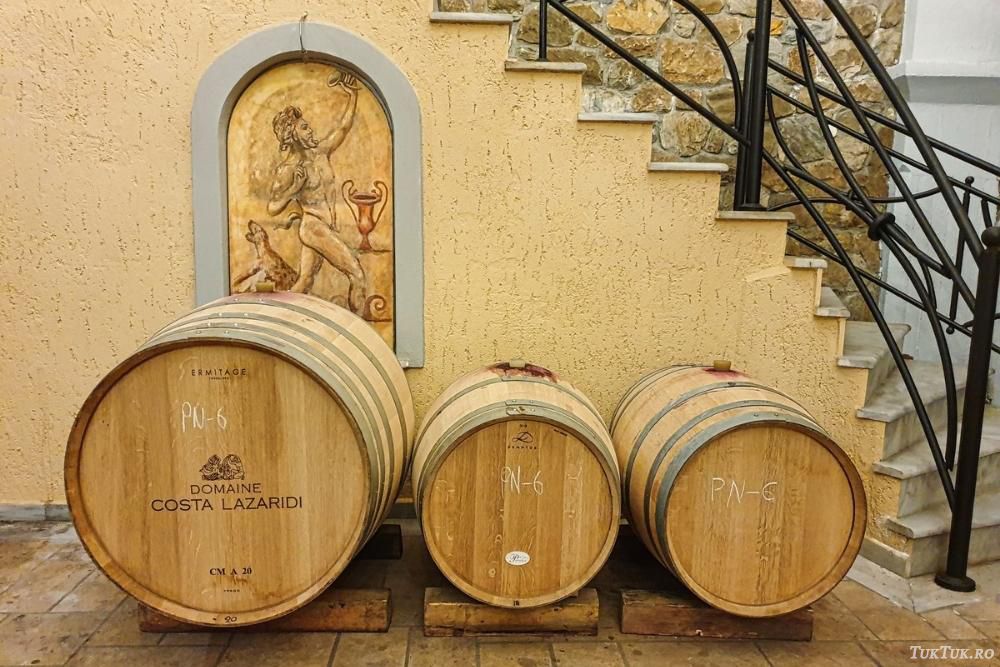
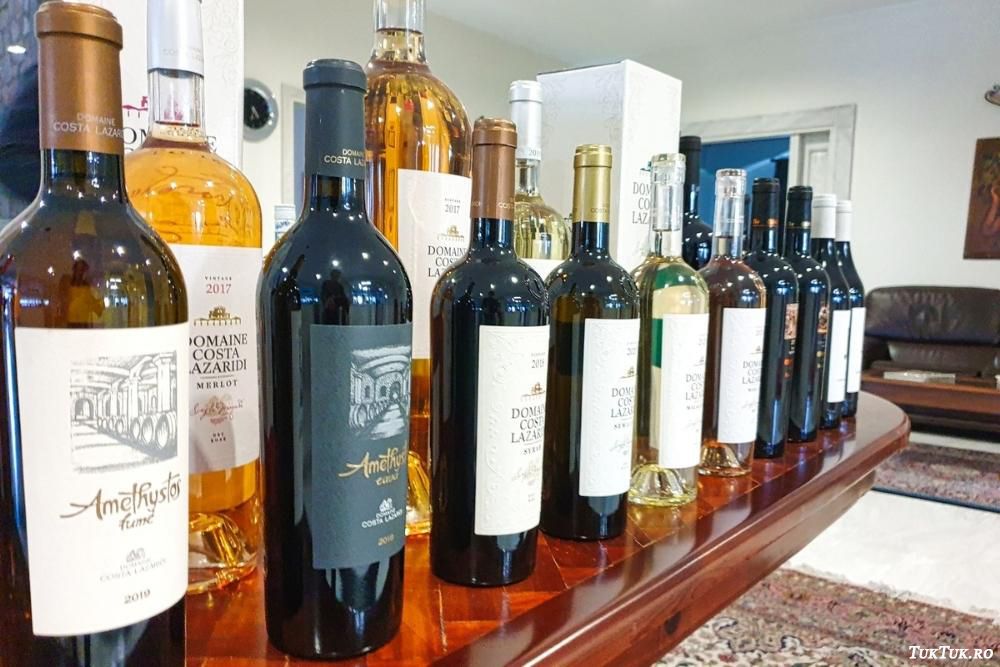
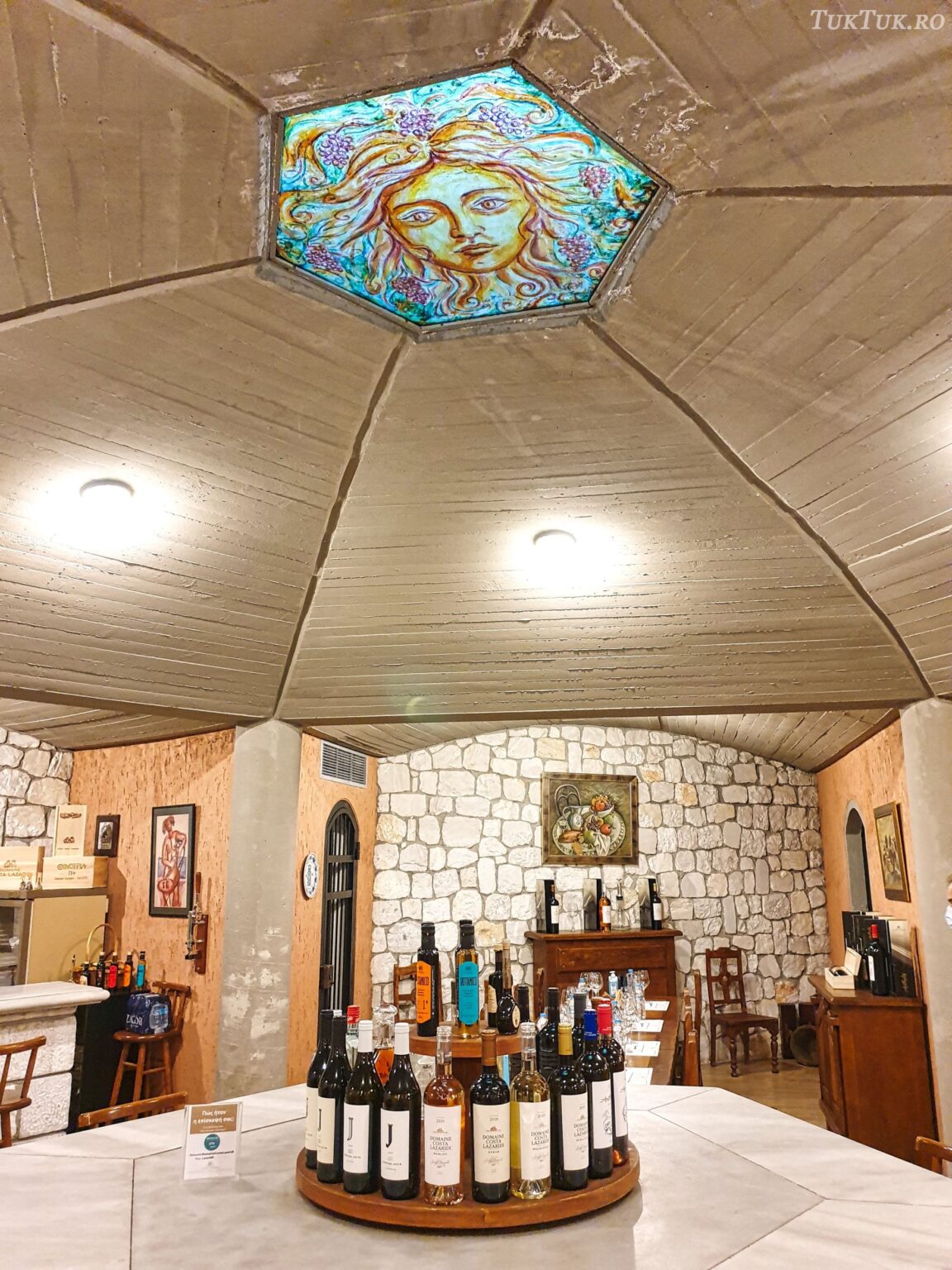
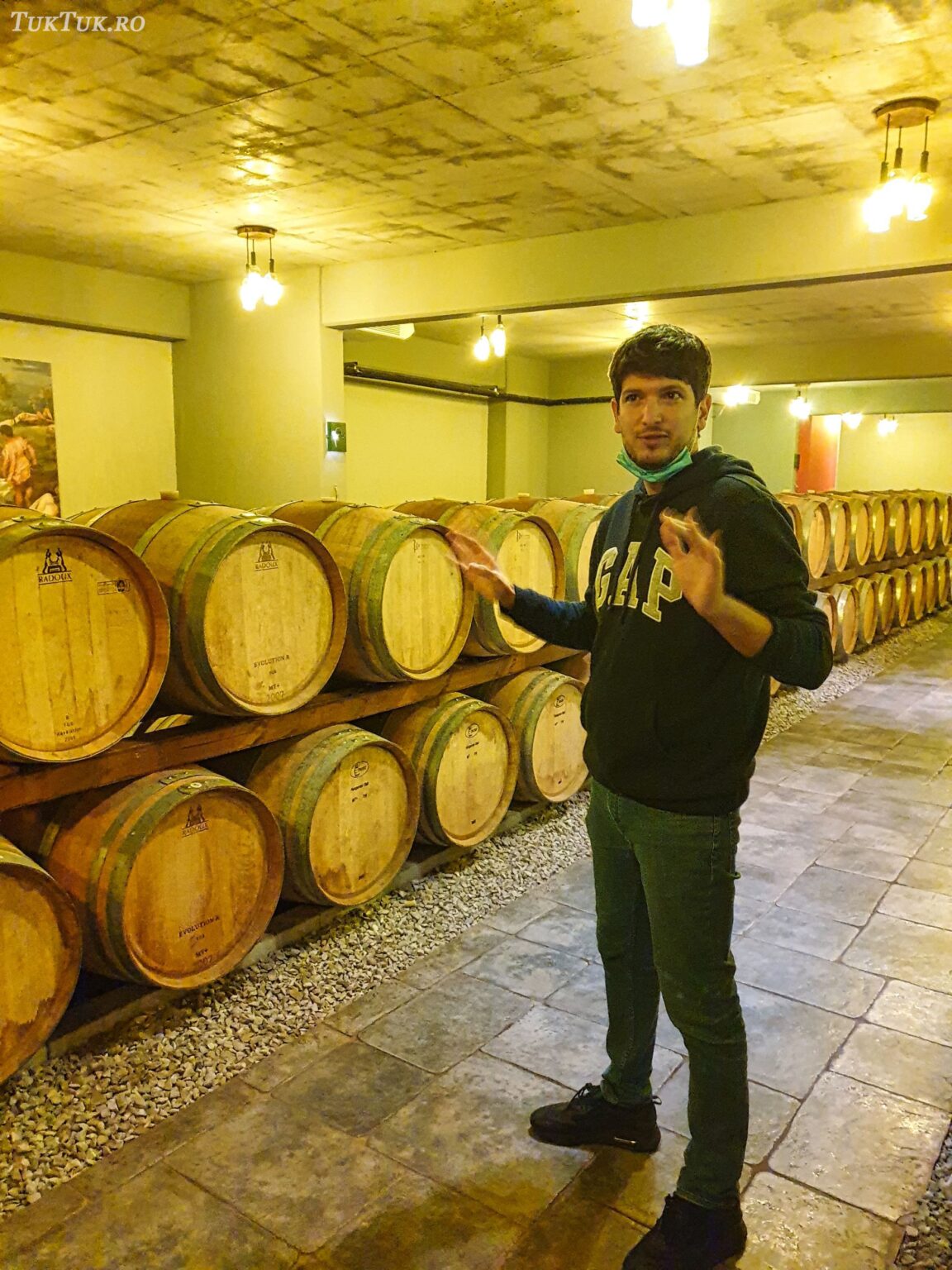
Besides marble, the Drama region has another thing to be proud of. One that people don’t take very seriously when it comes to Greece: wines. On this trip, the opinion of Greek wines was about to change. And even if I won’t say now that the wine in Greece is sensational (which would obviously be a lie), I will honestly put it differently: in (northern) Greece, you can drink some excellent wines. But… you have to know them and know where to get them from.
Returning to Drama, there were two wineries visited: the Costa Lazaridi Estates (with a history dating back to 1979, when they grew grapes of the Cabernet Sauvignon, Sauvignon Blanc, and Assyrtiko varieties from Santorini) and Oenogenesis (a company that blends local enology with the knowledge of a French family with a strong winemaking background). At both, I tasted good wines – whites, reds, and rosés – and to give a factual (and subjective, of course) account, my favorites were:
- Chateau Julia Merlot (red wine, from Costa Lazaridi) – 2019
- Oenotria Land Cabernet Sauvignon Agiorgitiko (red wine, from Costa Lazaridi) – 2018
- Skertso (rosé, from Oenogenesis)
Aggitis Cave – splendor with river
Michail didn’t just take me to waterfalls and wines, though. The Drama region is home to the only cave in Greece with a river running through it: the Aggitis Cave, one of the largest and most spectacular European caves of its kind.
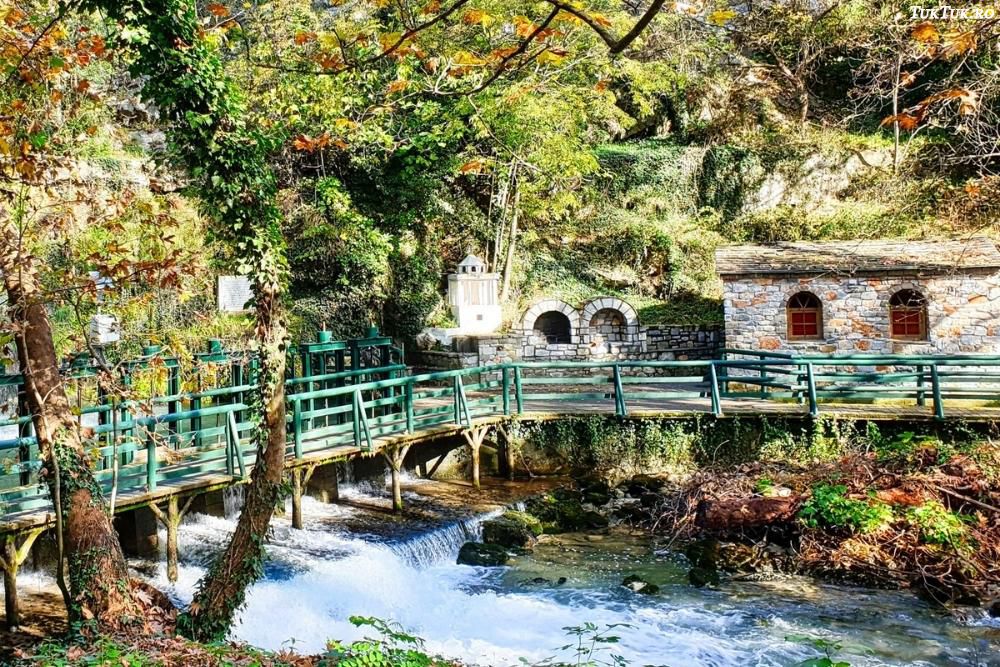
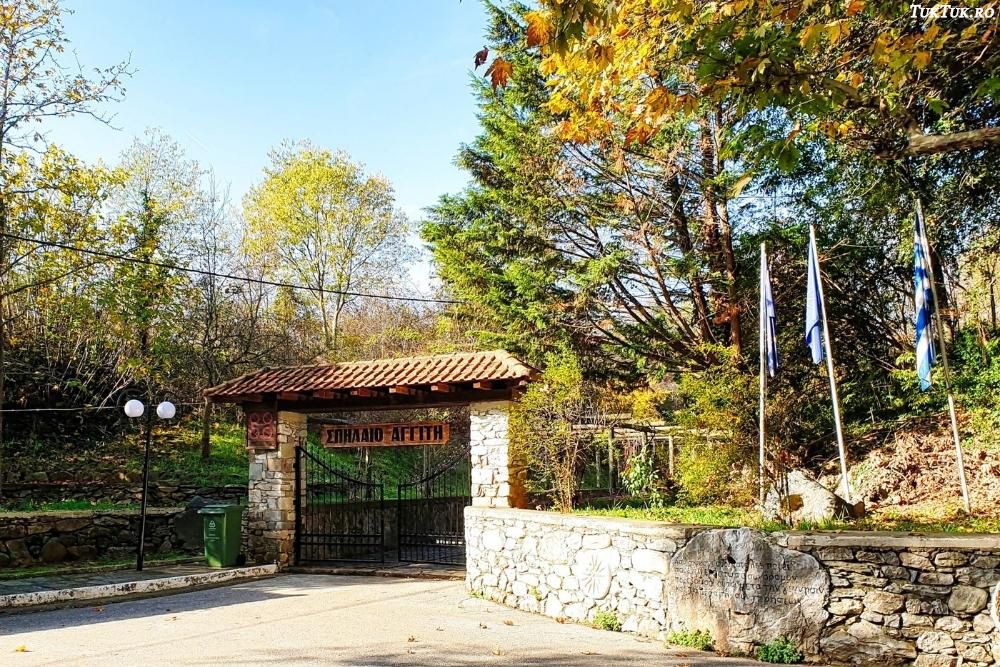
Just 25 km from the town of Drama, Aggitis (officially named Maara, but everyone knows it by the name of the river that runs through it) was first discovered and explored by Esprit-Marie Cousinéry, the French consul in Thessaloniki at the end of the 18th century. In addition to his political function, he is also remembered as a tenacious explorer, having ‘scoured’ the region of Macedonia for 40 years during that period.
In the 19th century, a huge wheel was installed in the first hall of the cave, which was used to pump water through an enormous pipe. Also, at that time, the first tunnel was dug to facilitate easy access to the entrance hall. In addition, it turned out that the water in the cave was clean enough to be used as drinking water for Drama.
But it was not until 1978 that Greek speleologists, in collaboration with their French colleagues, explored the cave to a depth of 500 meters.
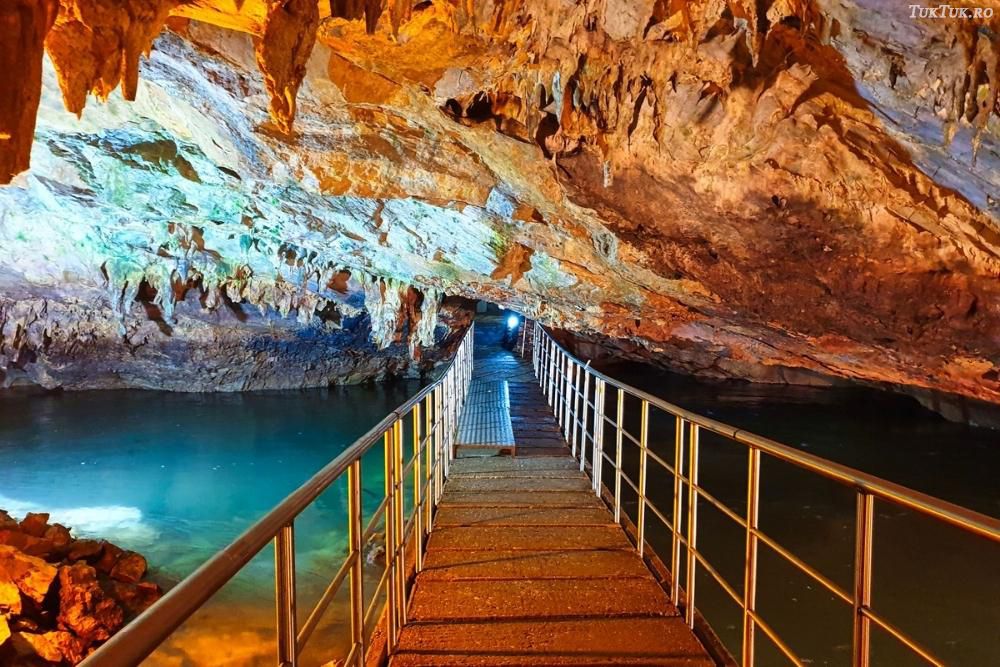
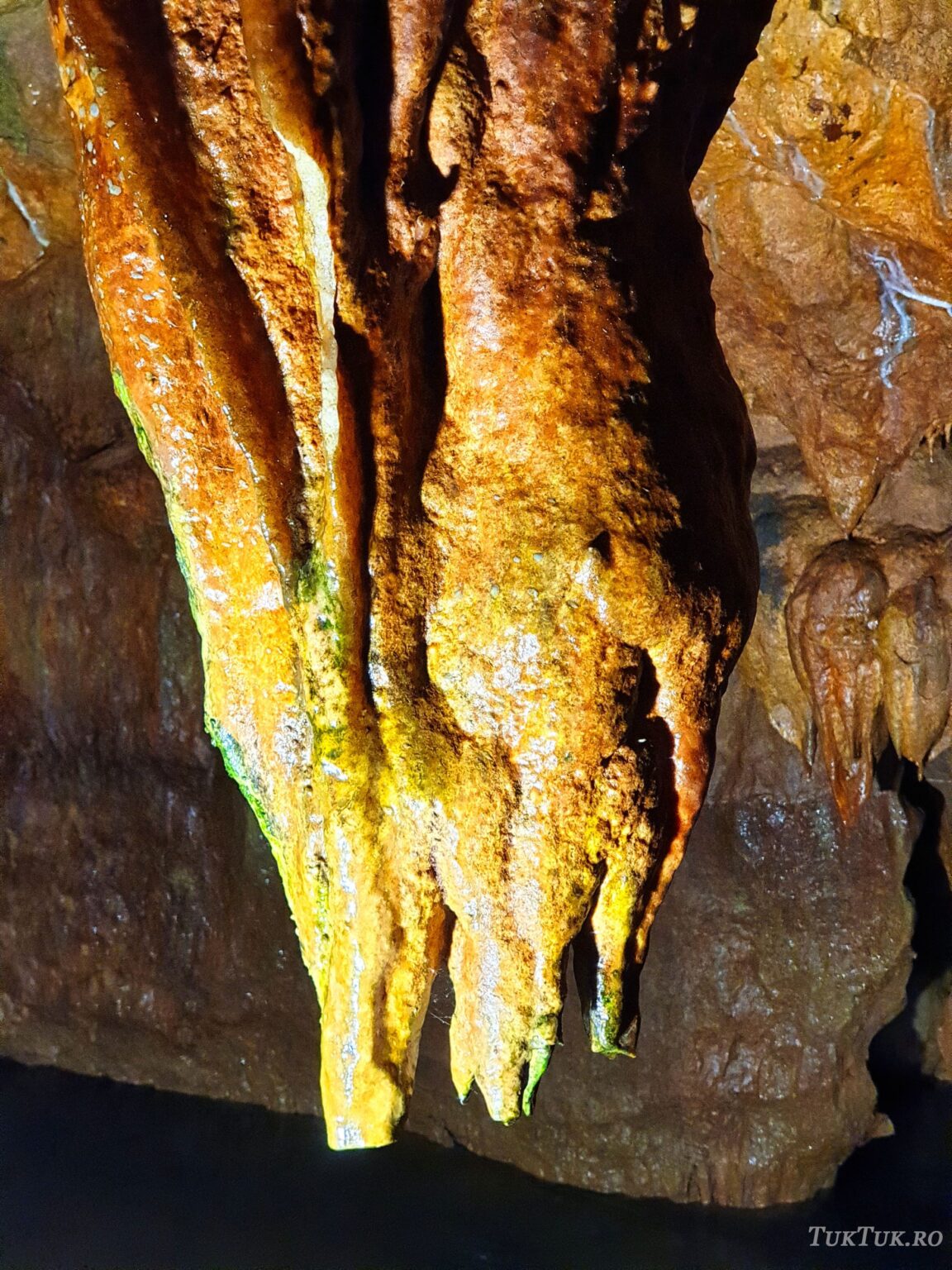
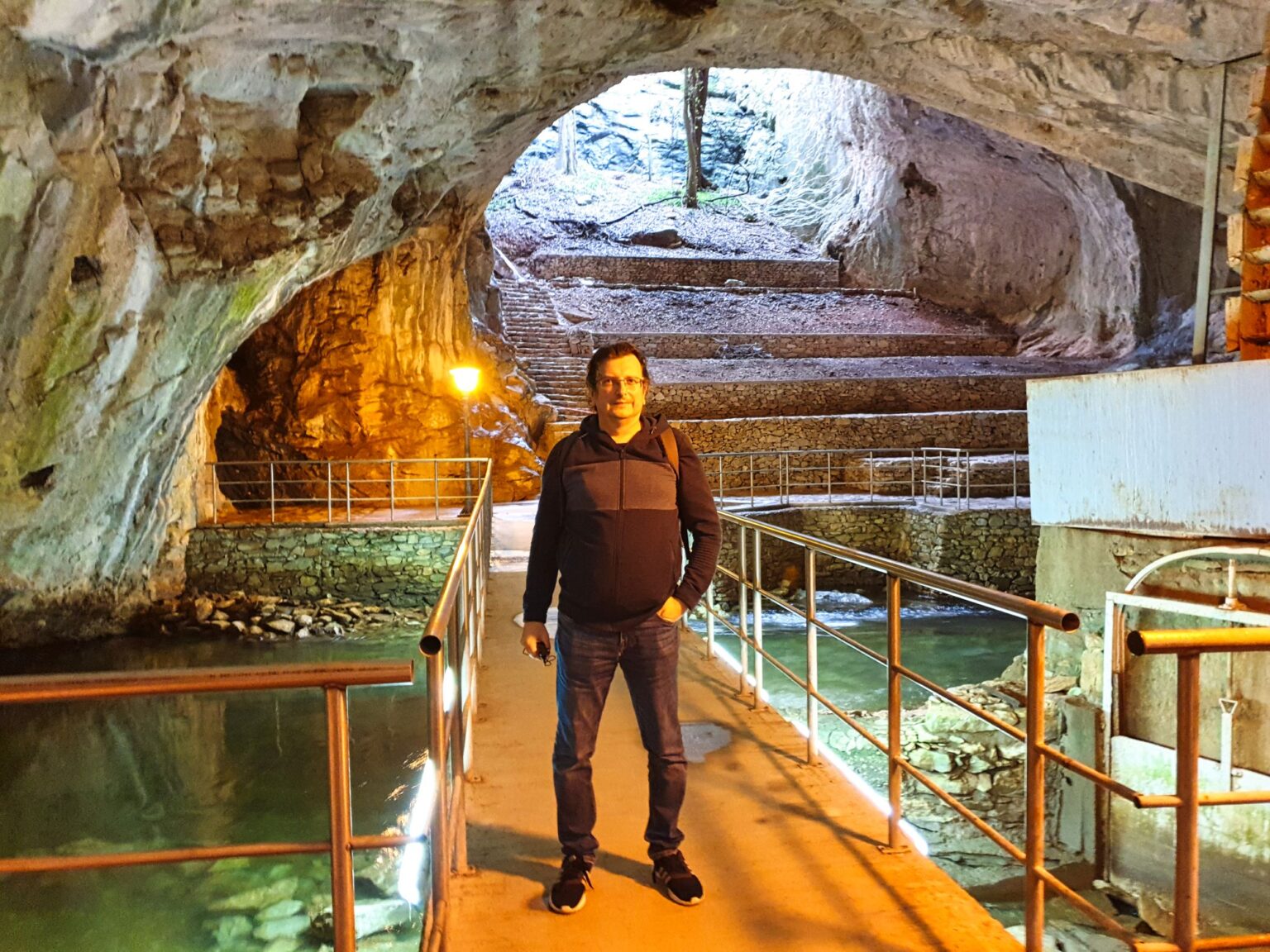
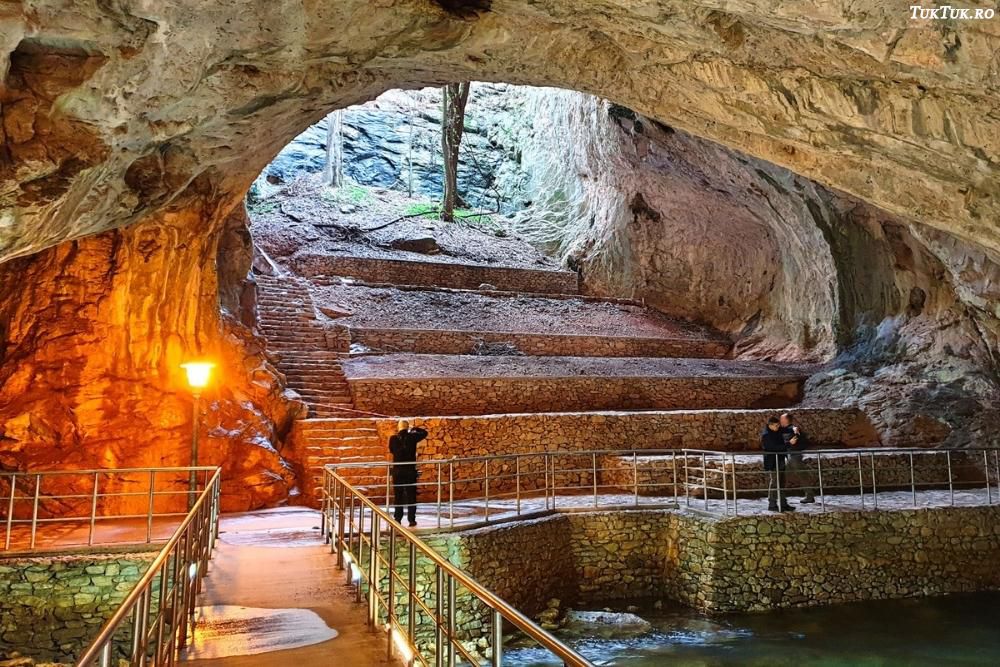
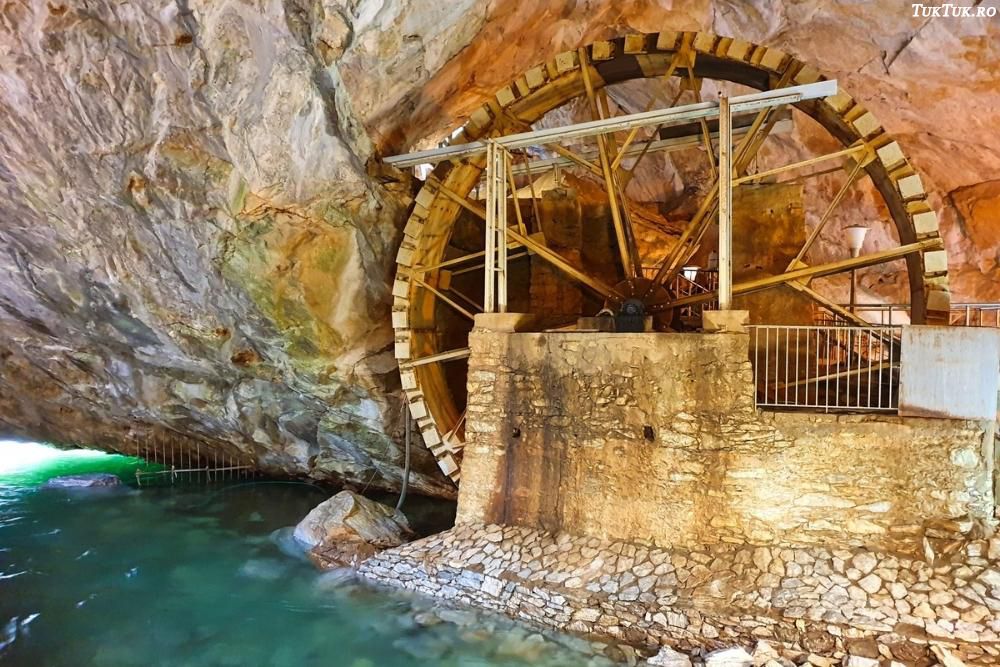
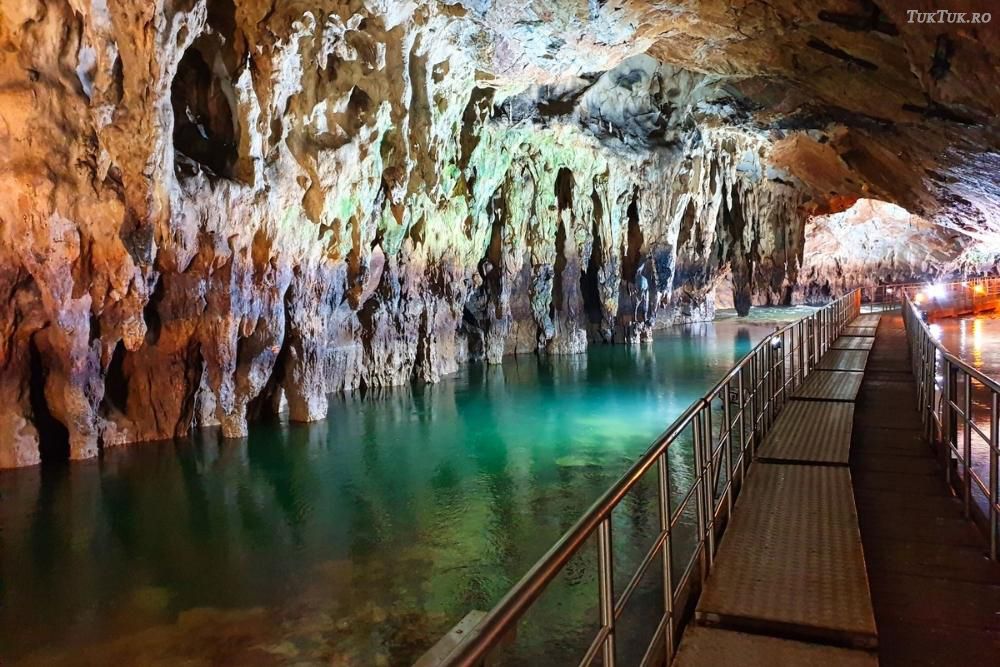
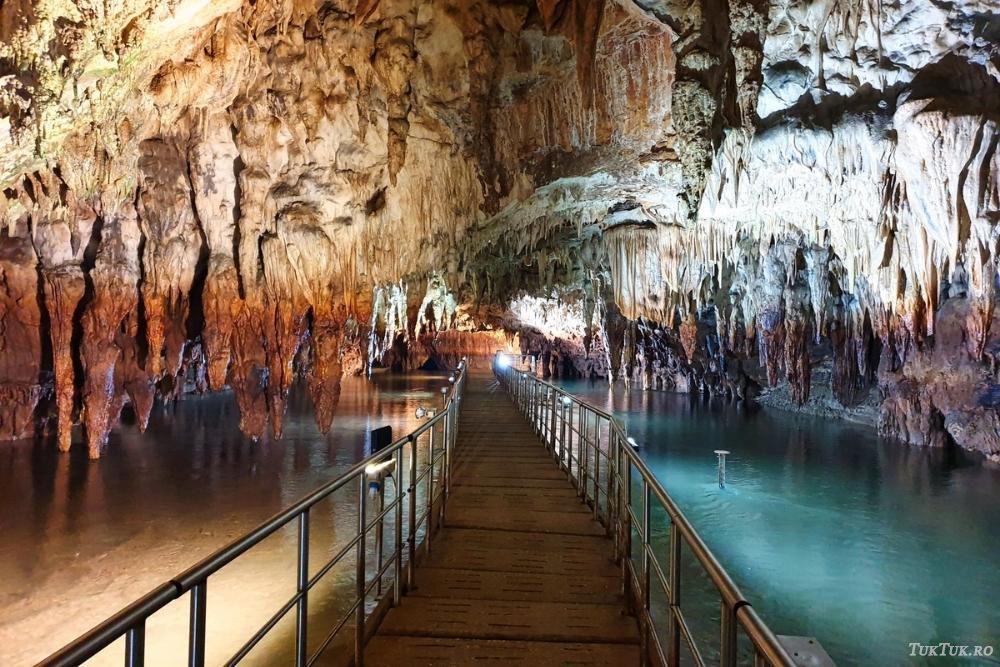
Finally, this natural ‘pipe’ has been open to the general public since 2000, when it was impeccably restored. The cave corridors total 12.3 km in length, and the average temperature inside is quite high: 13 degrees. The walkway stretches for 500 meters and, without any exaggeration, it is superb. You walk it in admiration, taking in the stalactites hanging from the ceiling in myriad shapes and sizes, towards the river that flashes briskly in a unique speleological sirtaki (because of it, the number of stalagmites is limited). Also impressive is the Acropolis Hall, which is the largest space in a Greek cave at 45 meters high, 120 meters long, and 65 meters wide.
I also learned about the Aggitis cave that skeletons of rhinoceroses, giant deer and mammoths, animals that lived on Earth many centuries ago, and stone tools have been discovered inside. Some of them are in the Archaeological Museum of Drama, which I was to visit the evening before I left.
Fort Lisse, or how to play at war
Have you ever been inside a military fort? Probably in video games. But if you want to translate the gaming experience into the real thing, you need to get to Fort Lisse.
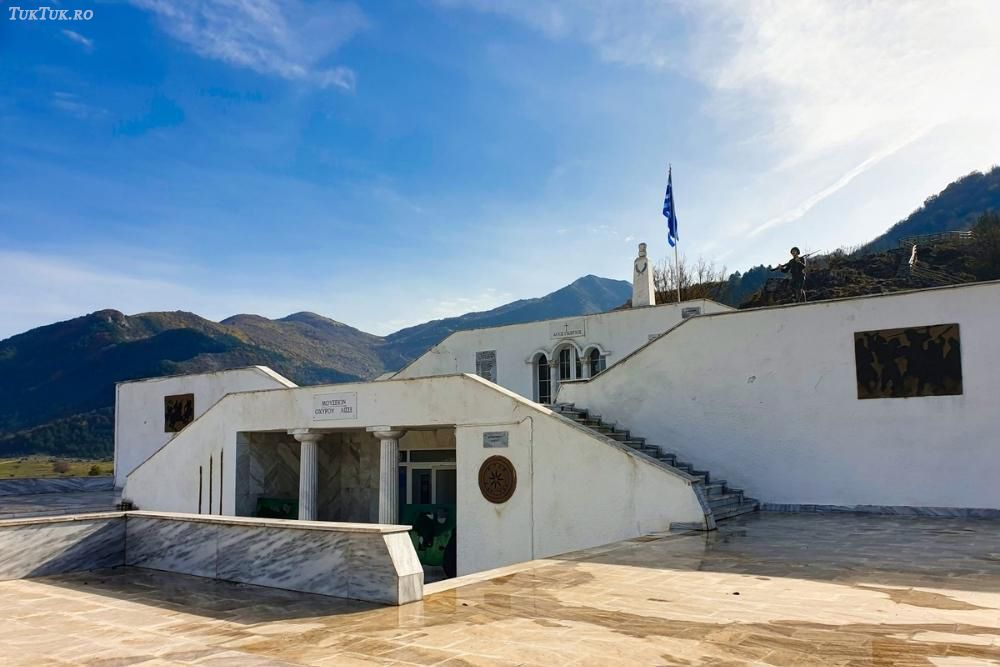
The Second World War played out one of its atrocious chapters in northern Greece. Specifically, around the Metaxas Line, a ‘chain’ of fortifications built along the Greek-Bulgarian border, designed to defend Greece in the event of an invasion from its northern neighbors. Named after the Greek Prime Minister at the time, Ioannis Metaxas, this defensive line stretched for 155 km. It consisted of a series of tunnels linking 21 fortifications and solid buildings, equipped with everything needed to face a strong offensive.
Fort Lisse was one of these fortifications, its historical significance having been acquired following the attacks of the Nazi German army, attempting to invade Greece, supported by the Bulgarian army, on 6-7 April 1941 in the Ochyro area. The Greeks bravely fought back the aggression, and the memory of those difficult days has been preserved in the small museum that has been set up in Lisse since 2002.

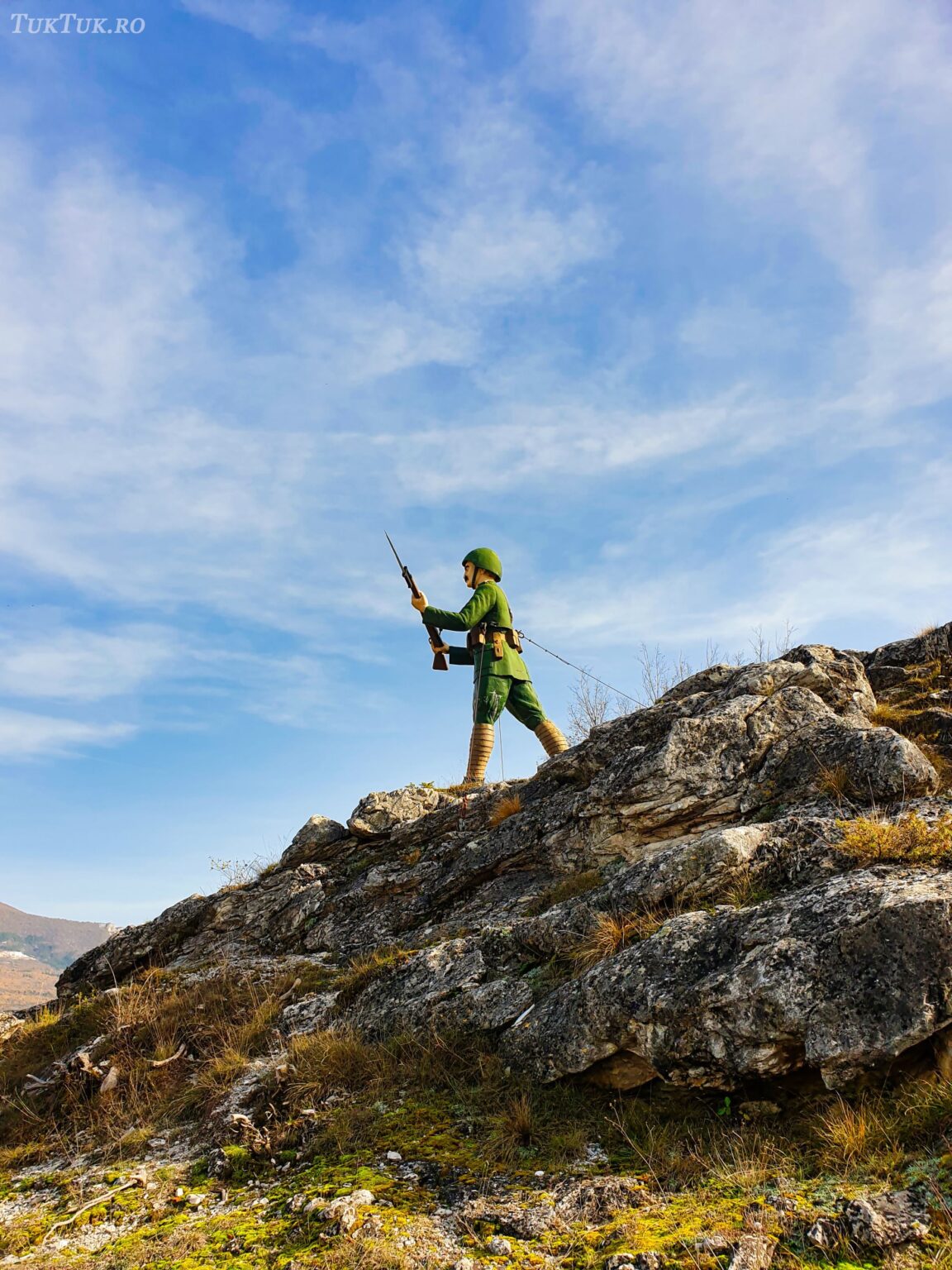
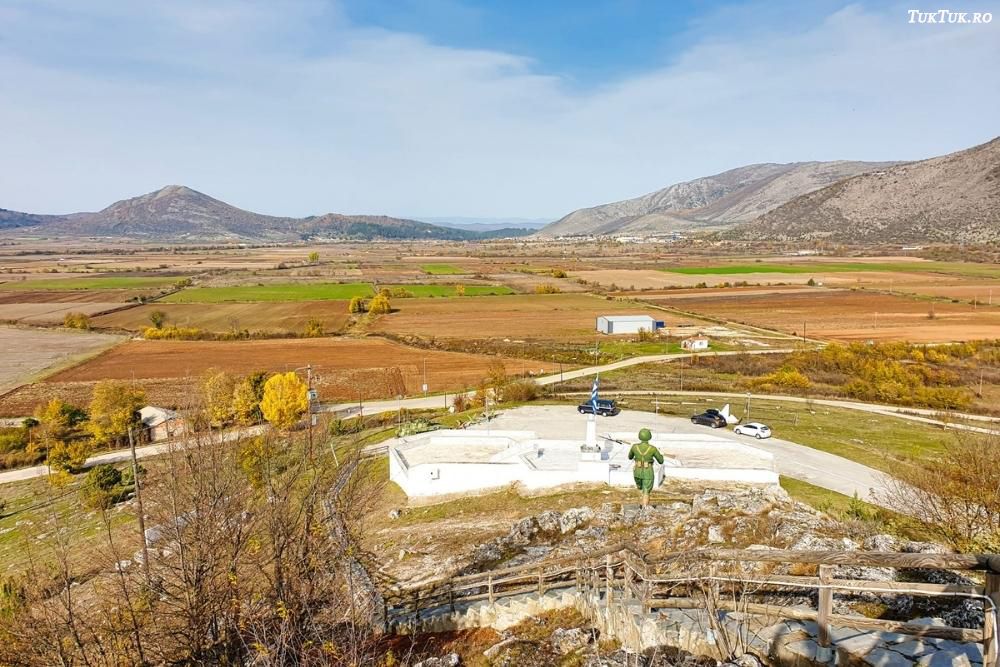
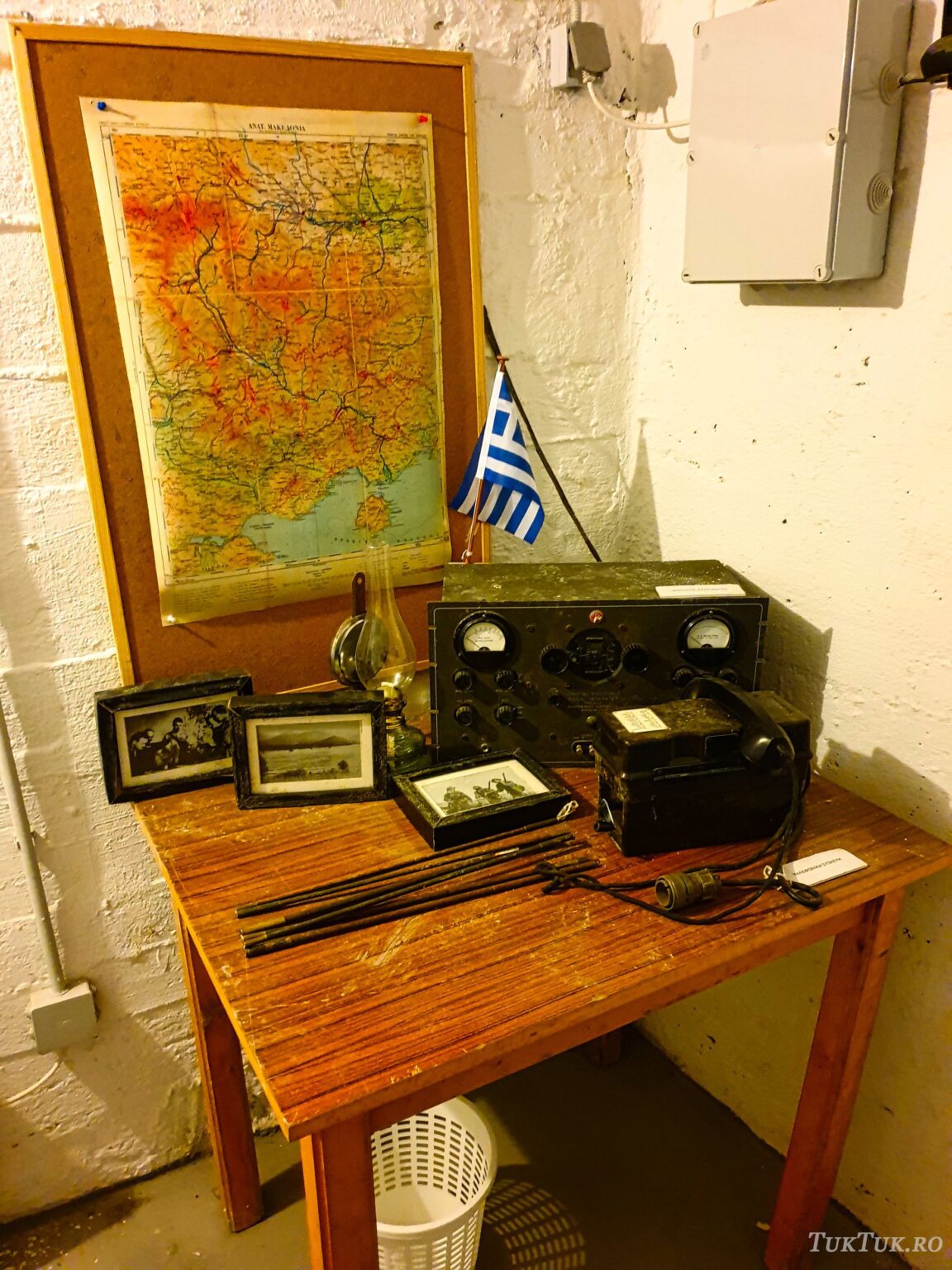
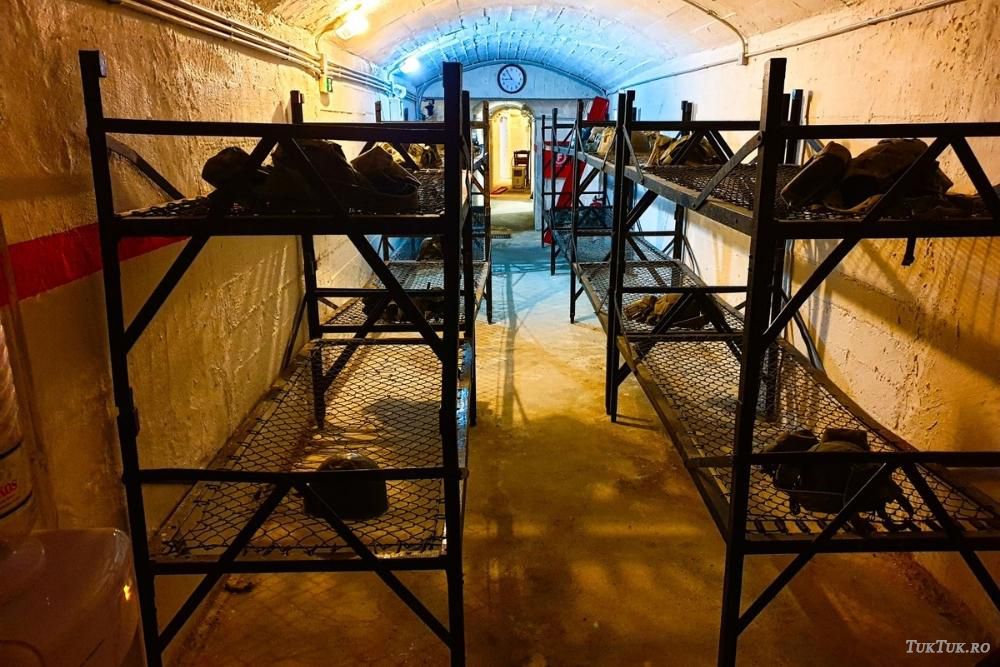
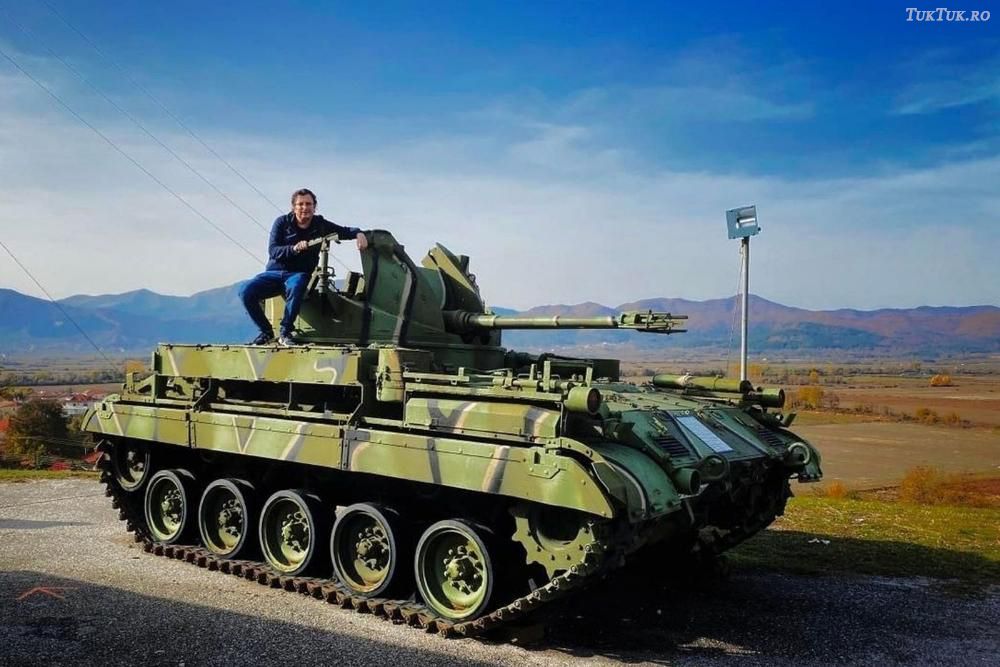
I entered the “belly” of the fort, walking through its underground corridors, saw how the soldiers stood (the site could hold up to 457 soldiers and 12 senior officers), how the defense system worked, what the battlefield looked like from a gunner’s perspective, saw weapons, grenades, uniforms and personal belongings of those who fought here, and even experienced a simulation of firing on the enemy.
Anyone who loves history and wants to see a glimpse of it first hand, needs to get to Fort Lisse. Which is open to visitors every weekend, with a commemorative event taking place every year on April 6. I also didn’t miss the opportunity to climb on the tank in front of the fort for a photo, although it’s not really an original World War II tank, but an American version produced in the 1950s.
Drama, cheerful or… dramatic
A stroll, even an evening stroll, through Drama, sheds light on the identity of this little town. If you’d say there’s not much going on here at first glance, I found its downtown unexpectedly lively, especially for an ordinary November day. There are lots of terraces and bars, a lively and colorful atmosphere, without exaggeration and excess, but enough to make you feel good. In short, you have somewhere to eat well, somewhere to shop, somewhere to relax.
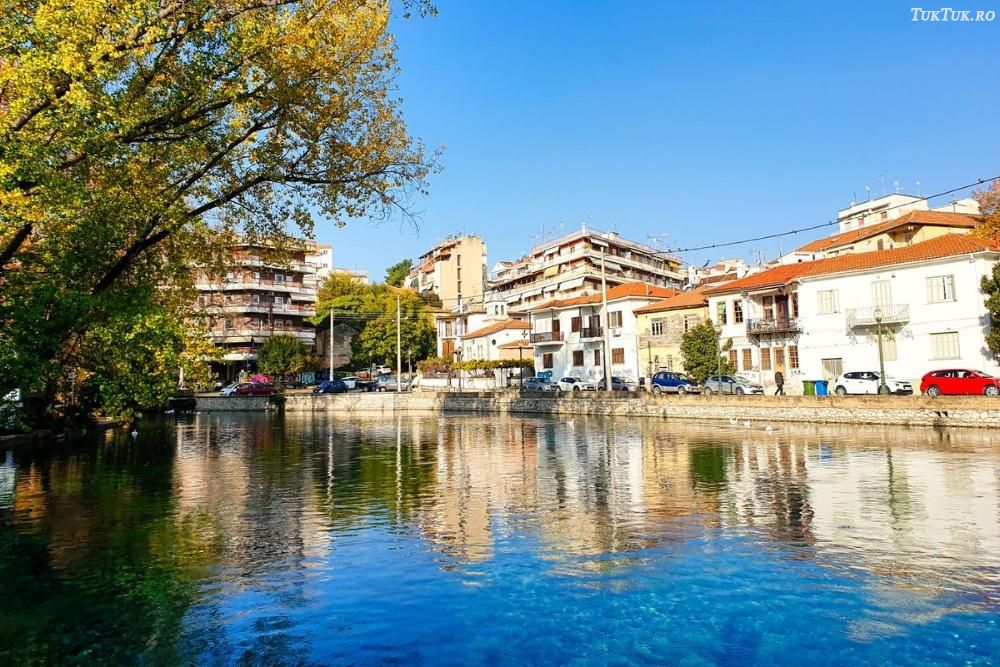
And there’s plenty to visit – from the Archaeology Museum in the Municipal Park, which houses various artifacts found in the area, many of them dating from prehistoric times (for example, the mammoth tusk found at the entrance to the Aggitis Cave) to the Byzantine church of St Sophia, dating from the 10th century, with the ruins of the walls visible in the vicinity.
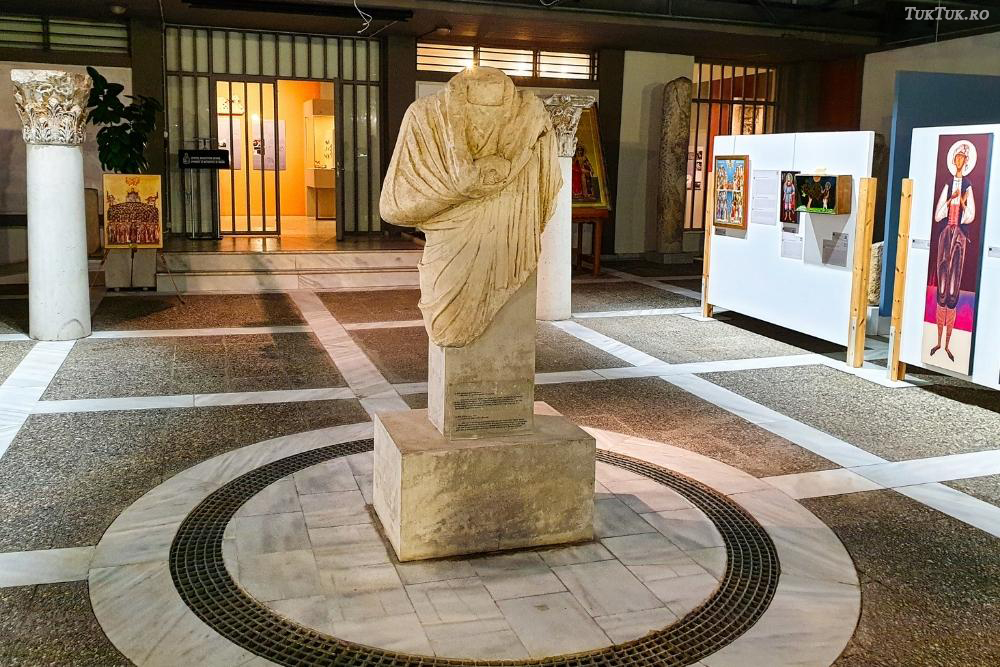
I was, however, moved by a visit to a photography exhibition in the Marble House, part of the photographic archives of the Benaki Museum in Athens. Voula Papaioannou (1898-1990) was a photographer born in Lamia and raised in Athens. During the Second World War, she produced an exceptional X-ray of the war and how it affected Greek society.
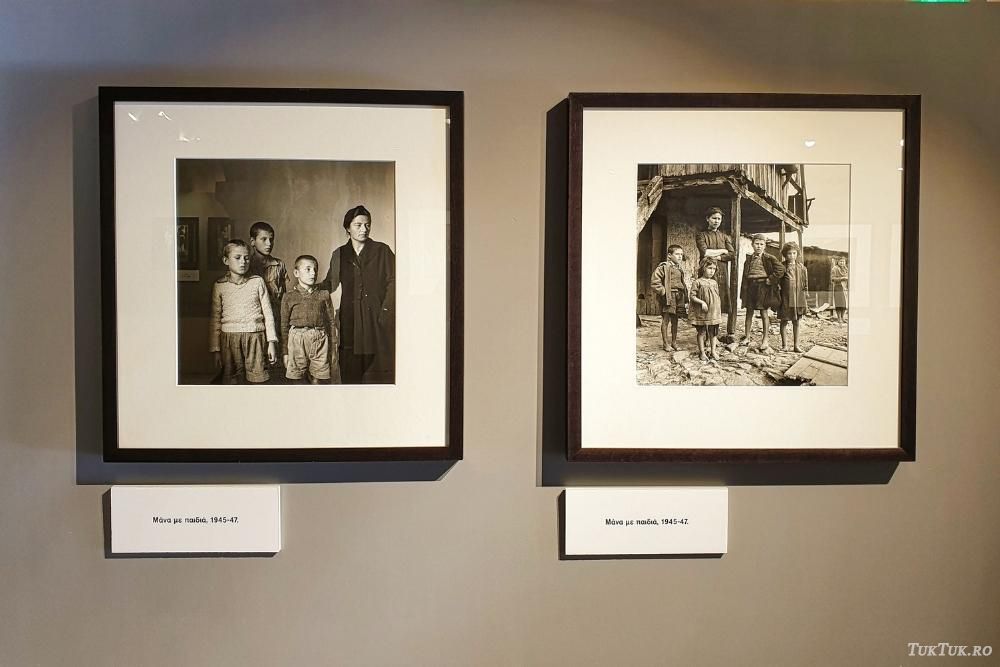
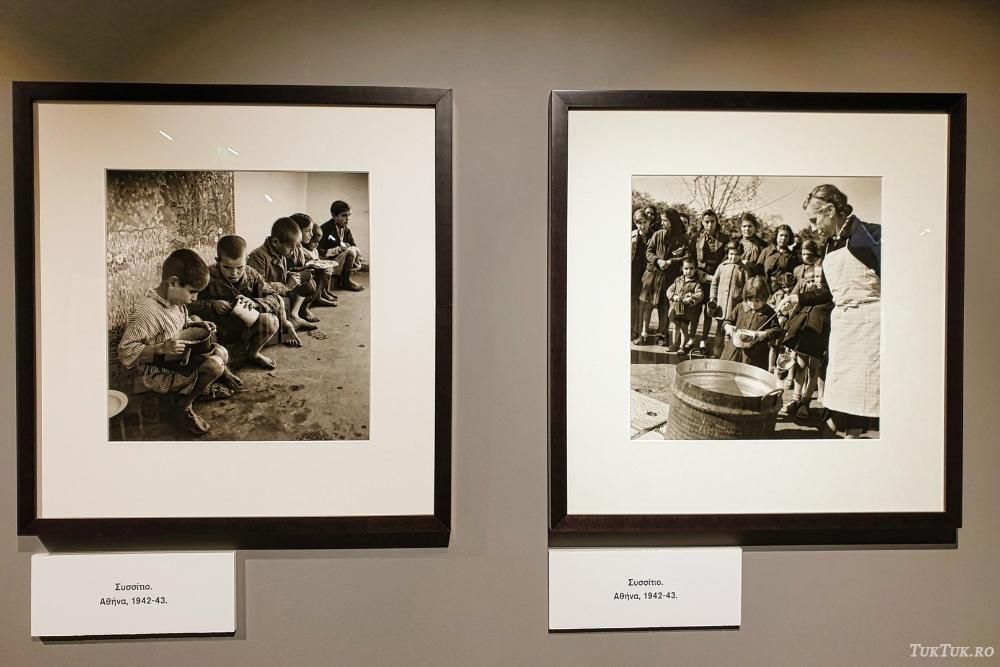
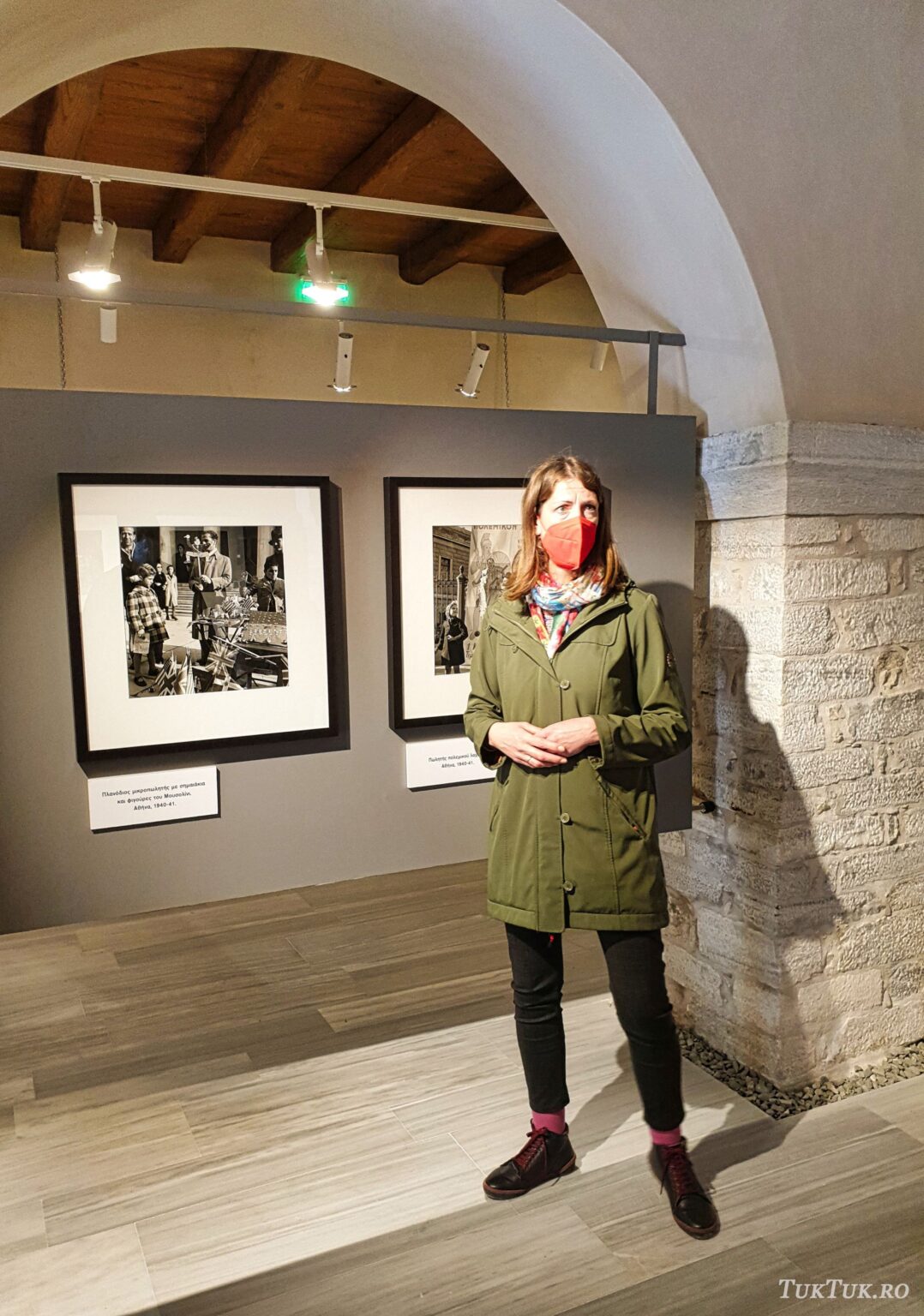
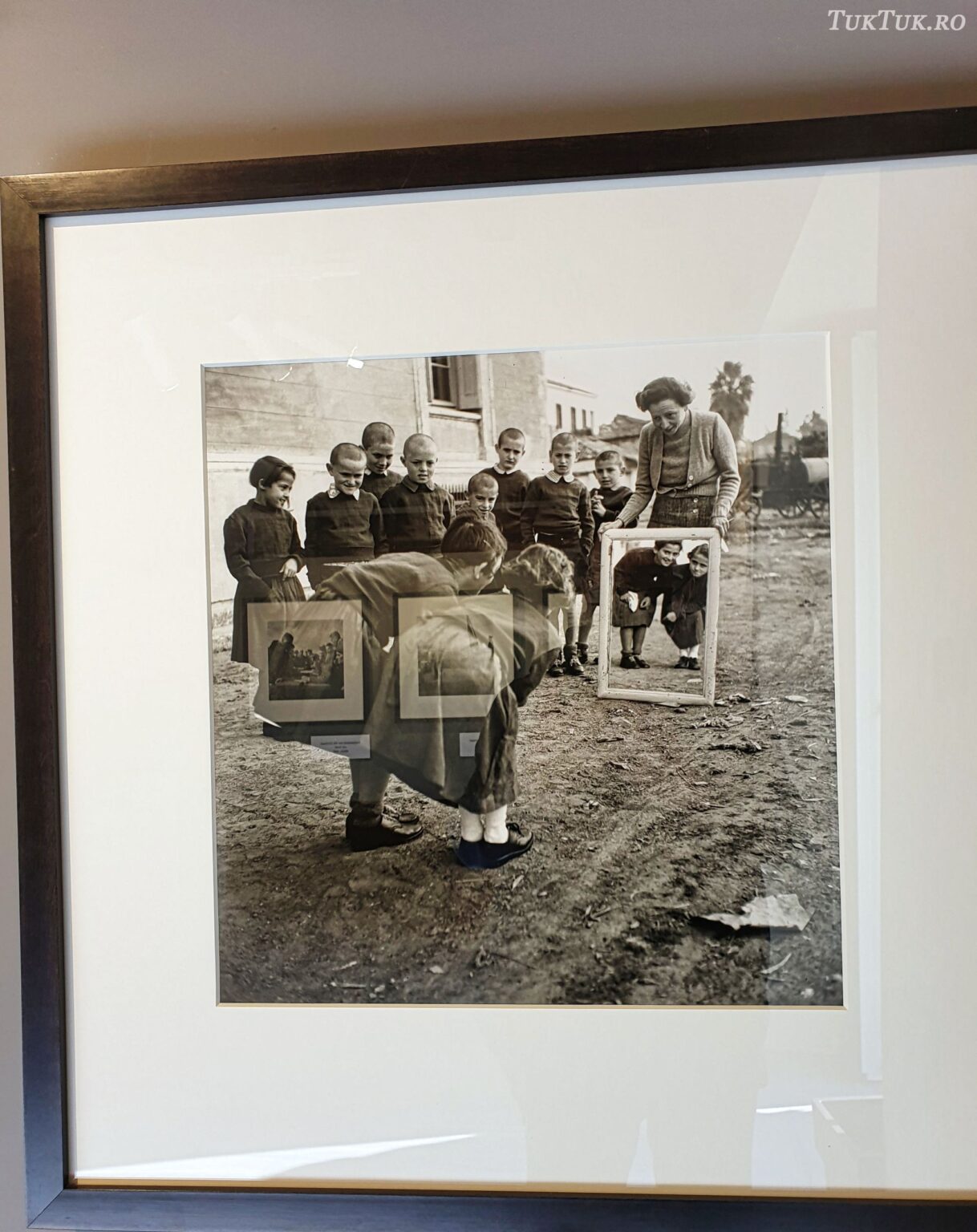
The exhibition is impeccably designed, with a simple and effective timeline, and has the gift of raising the emotional level to the highest heights. Voula Papaioannou’s photographs go beyond the classic idea that they “say more than a thousand words”: they tell the story of an era. Wartime Greece is shattering through the lens of her camera, and even though, obviously, in all parts of the world a war will always leave these impressive traces, it seems from Vola’s images that people, adults and children alike, still speak out in an attempt to make their troubles known. I don’t know if when you get to Drama, this exhibition will still be relevant, but if your steps take you to Athens, go to the Benaki Museum and discover Voula in the beauty and Drama of her photographs.
You may also like: Kipinas Monastery, in Epirus region of Greece

